This is a continuation of the Home Field Advantage statistical analysis series:
Part 1: Traveling distance (and proof of premise)
Part 3: Short rest and scheduling
This article uses exclusively MLS data from 2013 through July 23, 2017.
*For the purpose of this analysis, second yellow cards are treated solely as a red card (and not as a yellow).
*Also for the purpose of this analysis, offsides is not considered a foul.
Theory #4: Referee bias
Another theory is that the referees have a bias towards home teams, perhaps feeding into the crowd’s mentality and being more sympathetic to the home team’s perspective.
First we have to assess how much of an impact various referee decisions have on match results.
Referee Decision Impact
*For a key on what the different shapes/lines represent, please read the Part 2 article linked above.
The following shows result points against the difference between a team’s fouls called and that of their opponent.
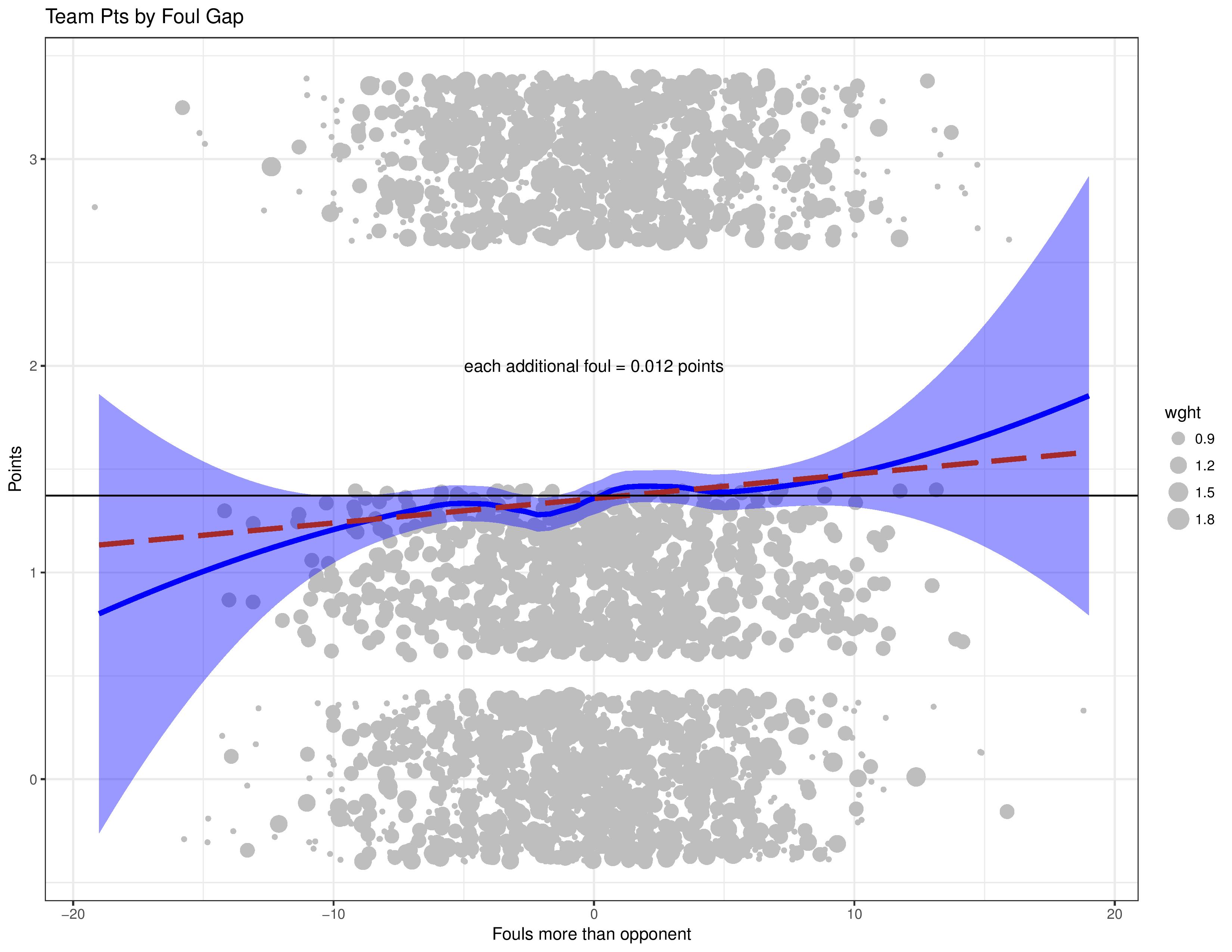
This tells us that there is an odd phenomenon where teams who foul more than their opponent are actually slightly more likely to get better points, although obviously by a small margin.
Next is points against the amount of extra yellow cards a team receives over their opponent.
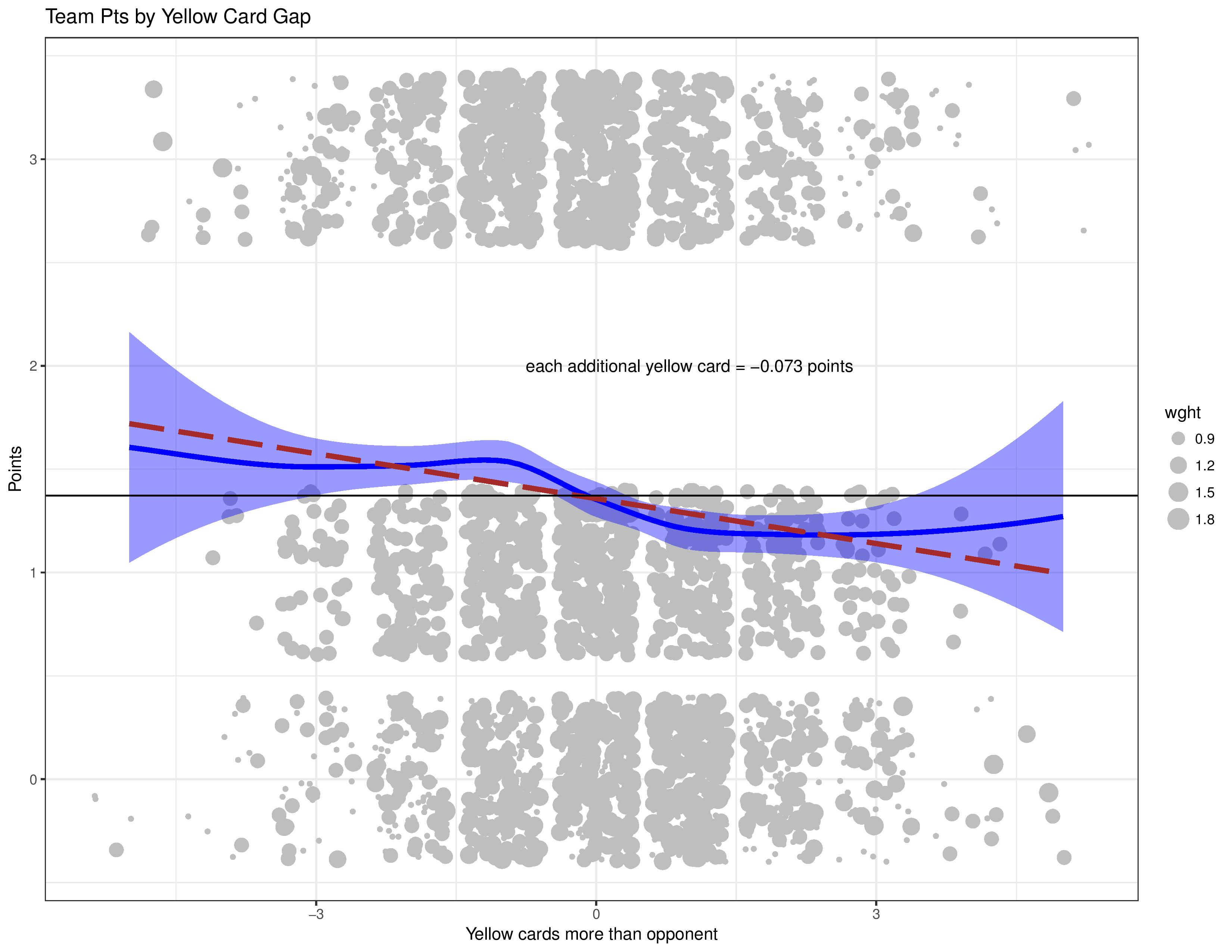
We see here an expected result in which teams that receive more yellow cards in a match than their opponent decrease in their expected points.
The following shows result points against the amount of additional red cards a team receives over their opponent.
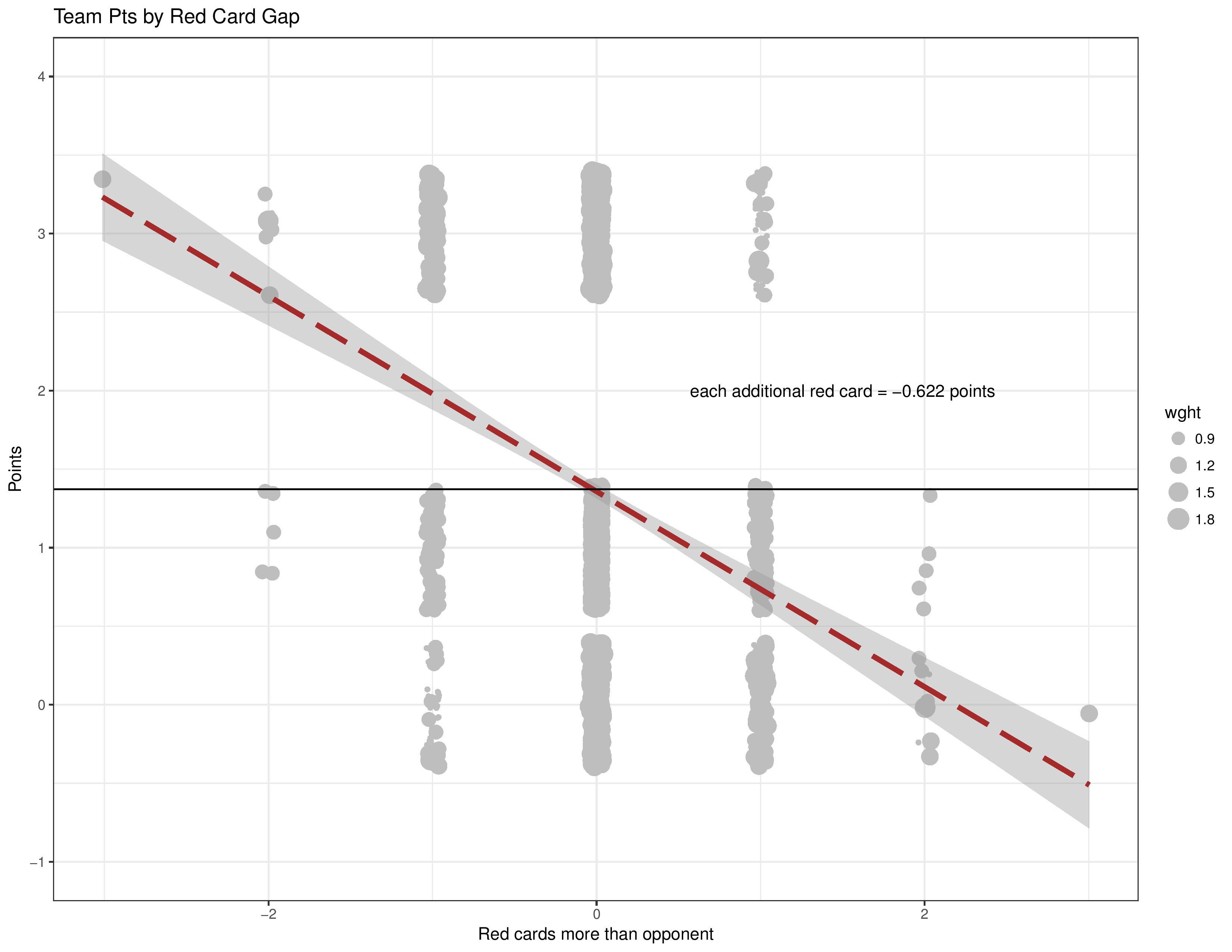
As would be anticipated, we can see a steep decline when teams receive more red cards than their opponent.
Lastly, I couldn’t find data to inform me on penalty kick calls, so we’ll have to make due using penalty kicks resulting in goals as a substitute. The following shows the result points against the additional penalty kick goals over their opponent’s.
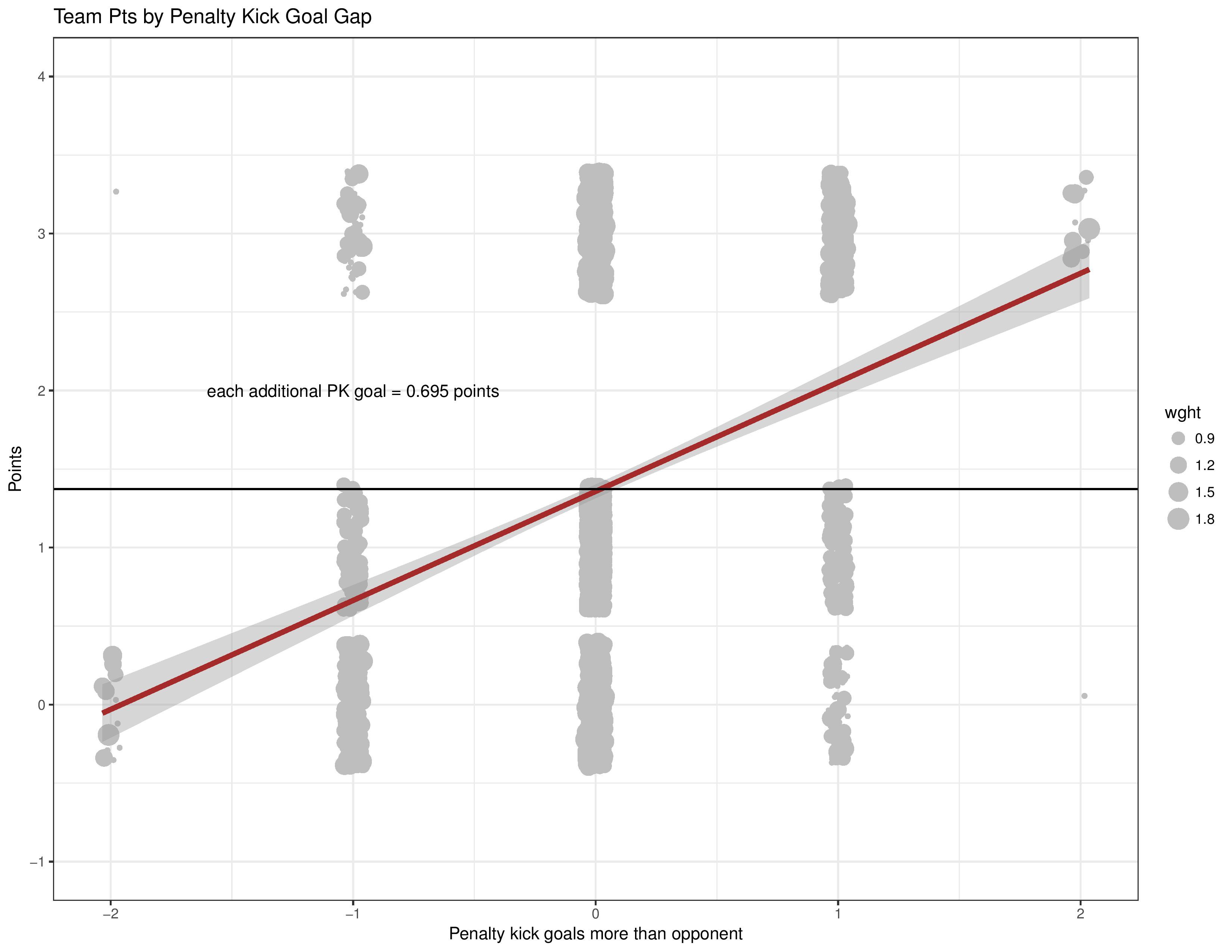
Again, especially given that we’re directly using a type of goal, it is not surprising that there is a substantial advantage to receiving additional penalty kick goals.
Referee decision home/away difference
Now that we’ve established that referee calls have an effect, we then need to determine whether home teams receive favorable treatment from referees.
The following chart show the fouls committed frequency broken out by home/away status.

The following is the same concept as the previous chart, but attempts to smooth out the spikes to show relative frequency.

Next we show the frequency of the difference between home and away teams in the same match with regards to the fouls called difference.
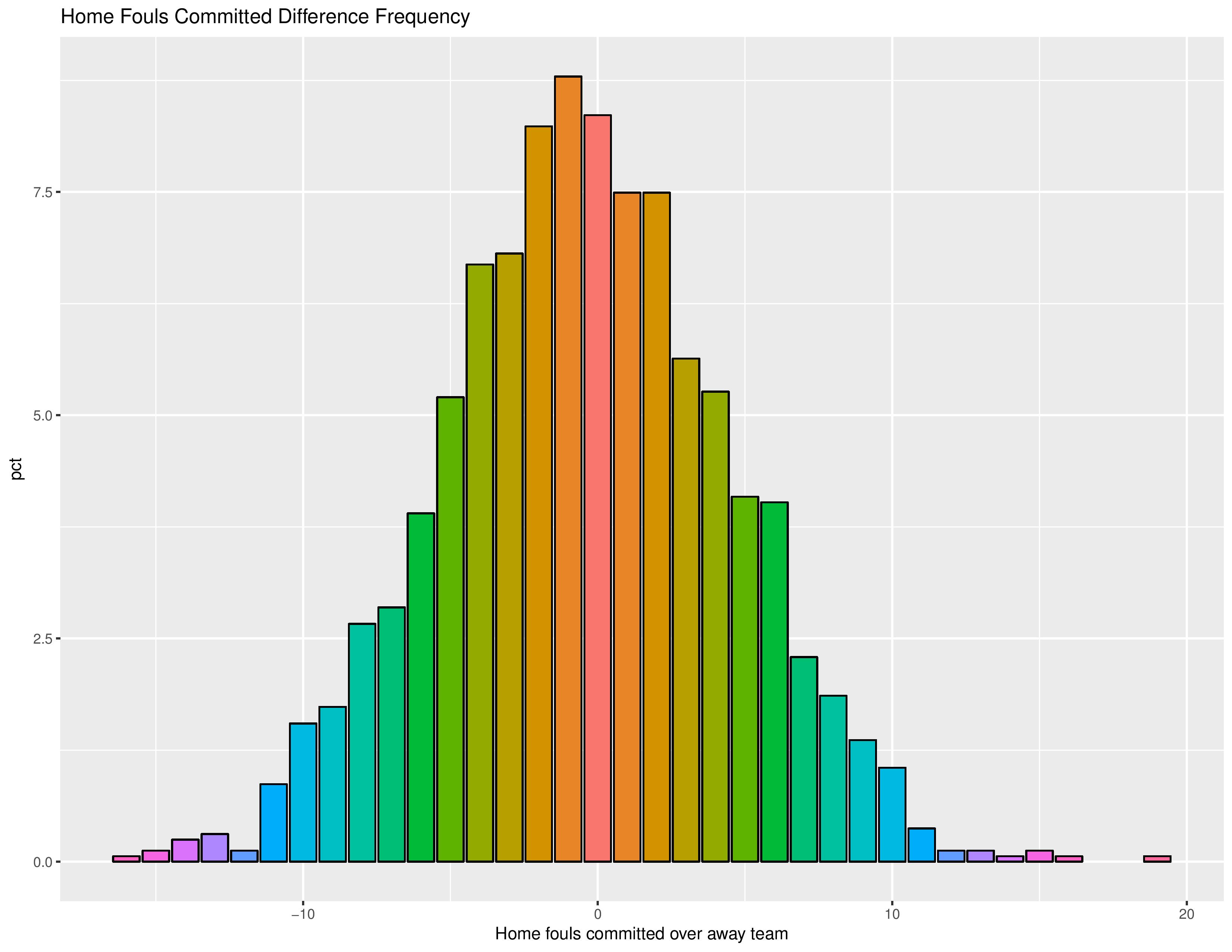
This definitely shows that home teams are a little less likely to be called for as many fouls as their opponent (although we’ve seen earlier that this can actually be bad for the home team).
The following shows similar charts for yellow cards, red cards, and penalty kick goals.
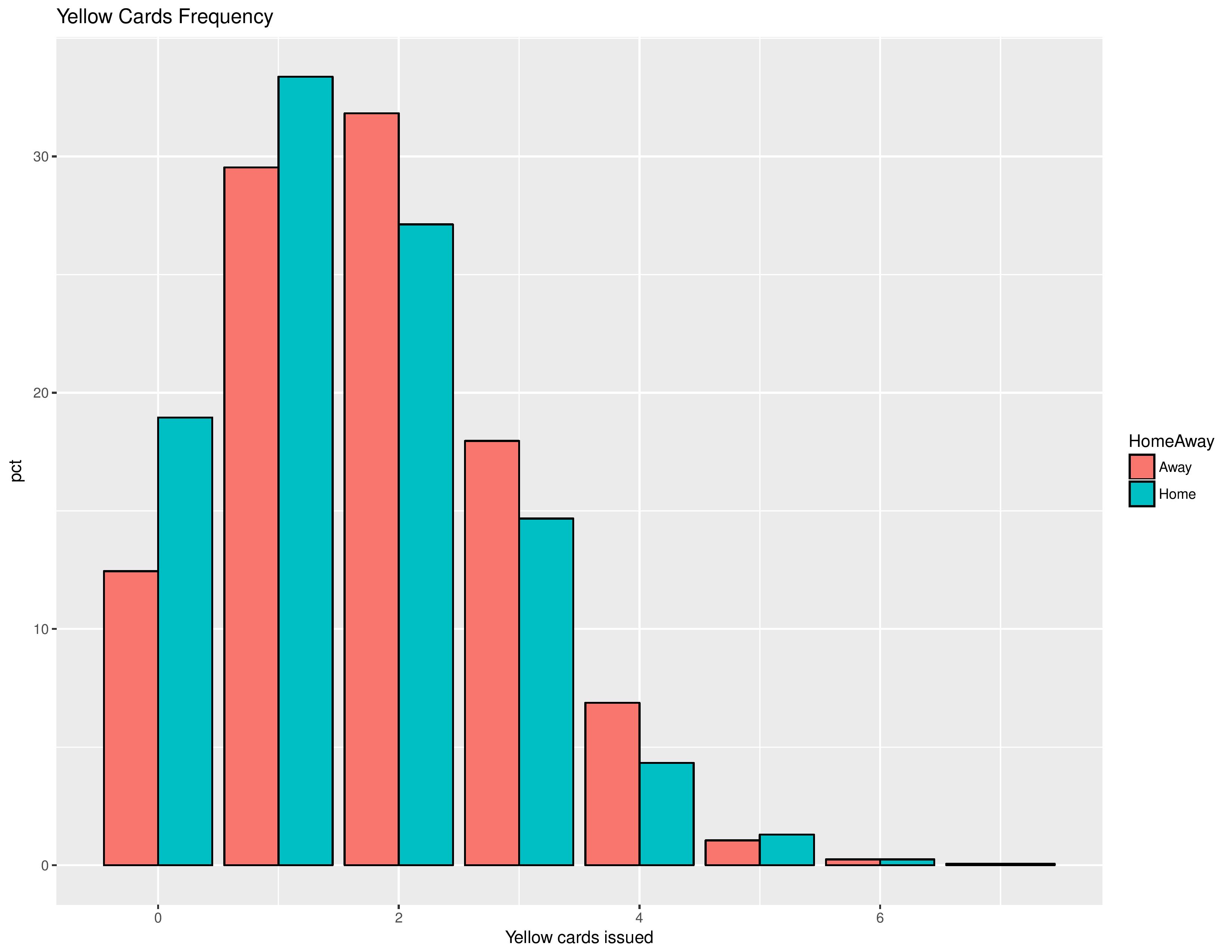
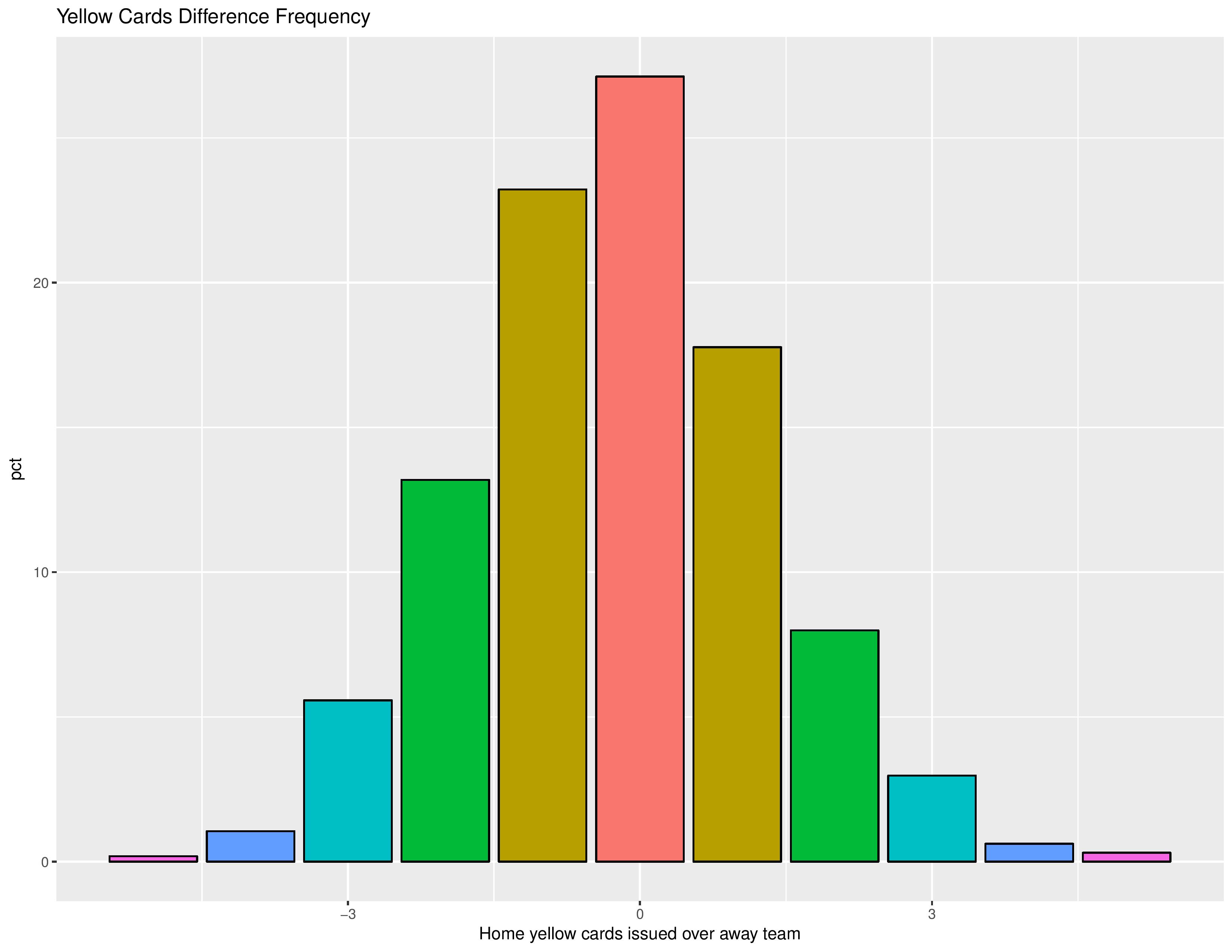
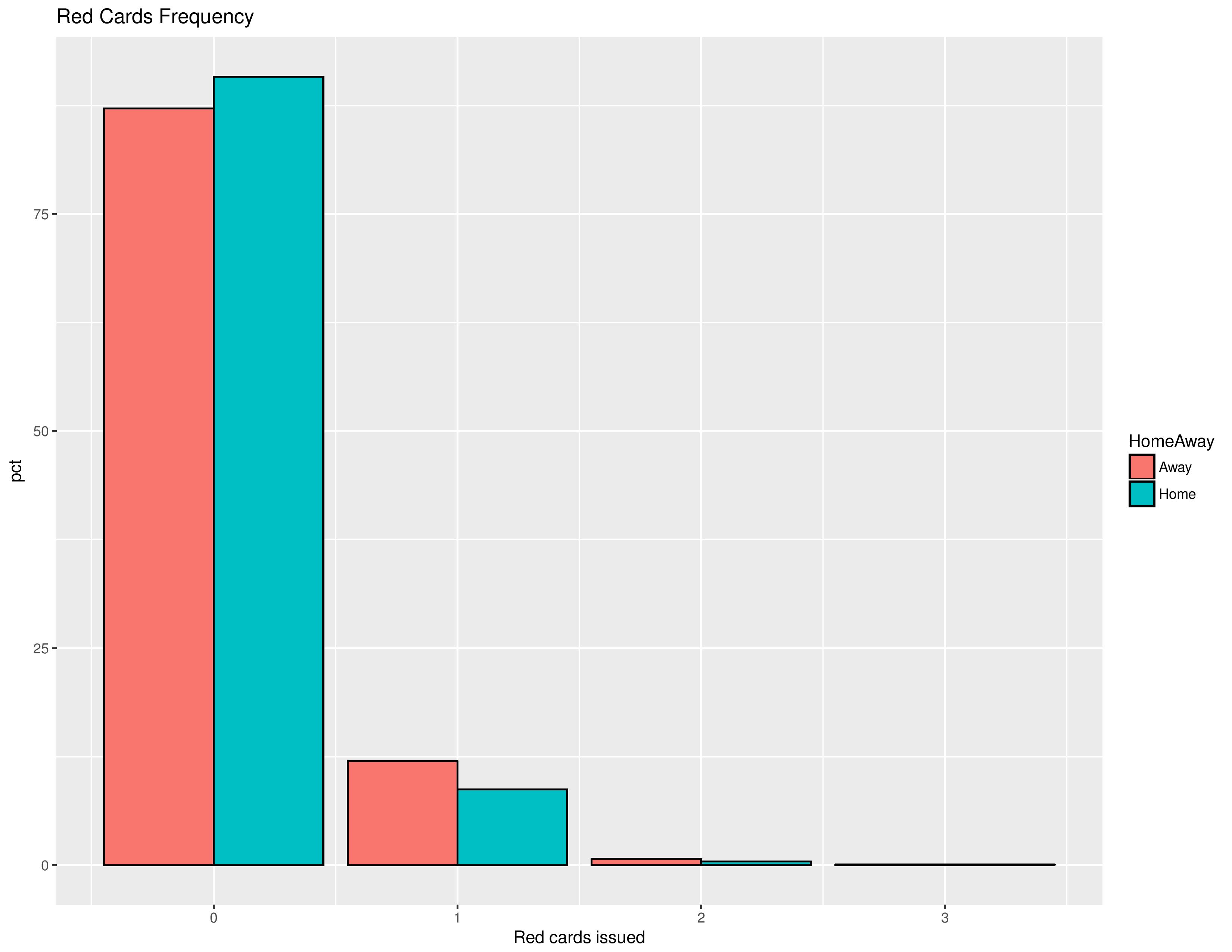
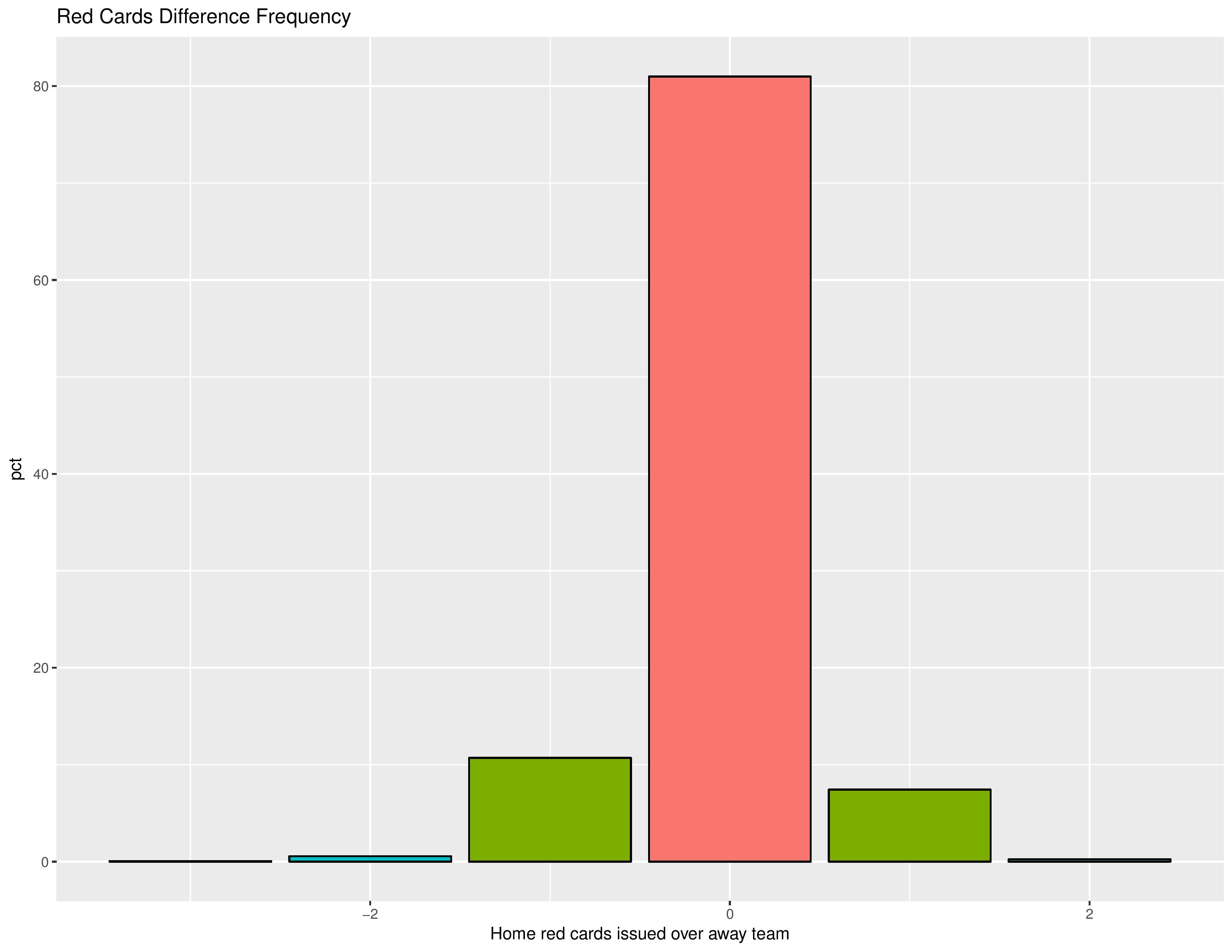
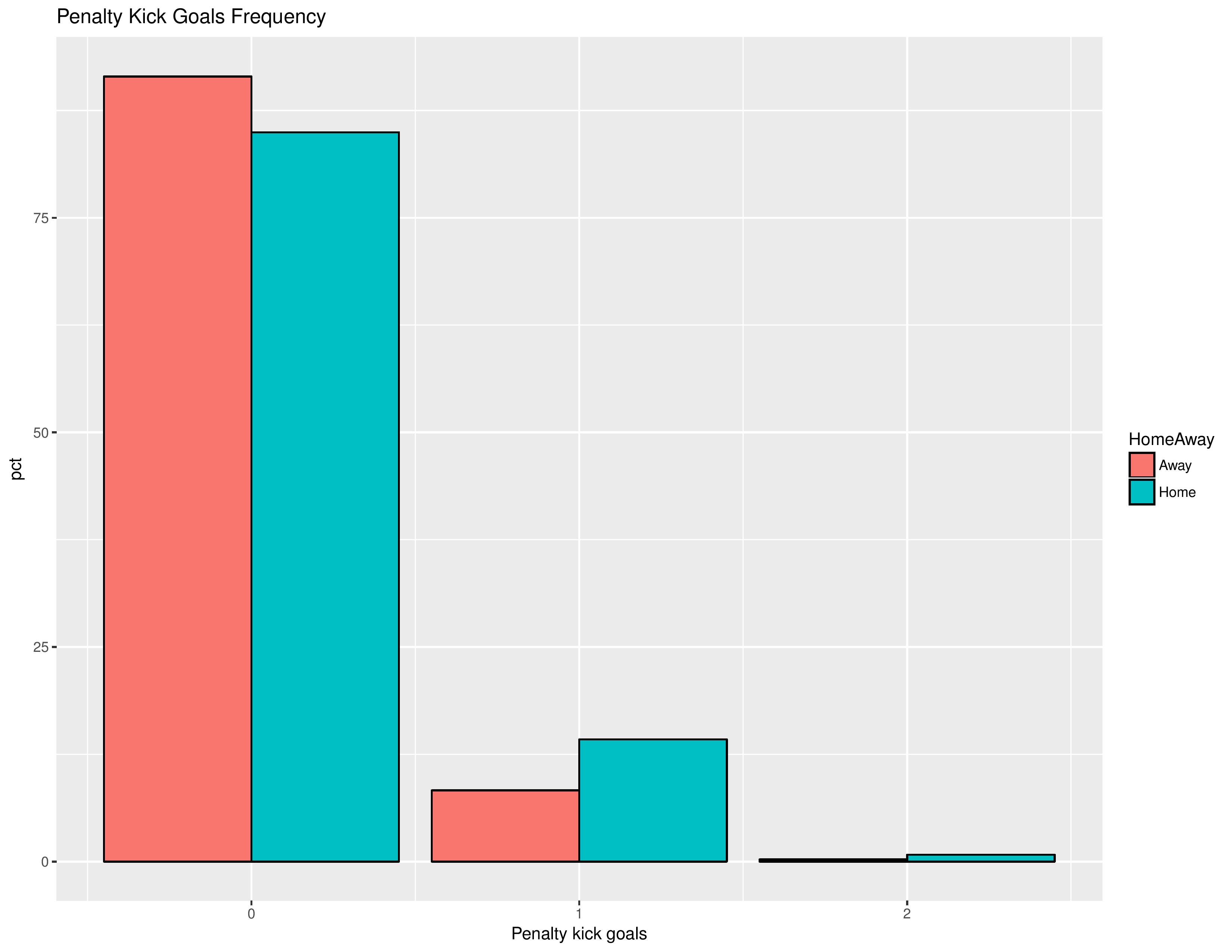

As we have seen from this section, referee calls tend to call away teams for more fouls, issue them more yellow cards, more red cards, and fewer penalty kick goals.
Team-adjusted Referee decisions impact
As we have done with previous analyses, we need to to account for the general performance of individual teams over the observation window, just to make sure teams that regularly engage in a behavior that results in more yellow cards but regularly win don’t distort the relationships we’re trying to measure.
The following uses a model to account for a team’s performance over the observation window and then judges the model’s resulting error in predicting result points compared with the Foul difference. If there is correlation, it indicates that the Foul difference does indeed have an effect and belong in the model.
Values greater than 0 indicate that the model overestimated the team’s result chances, and values less than 0 indicate that the model underestimated the team’s result chances.
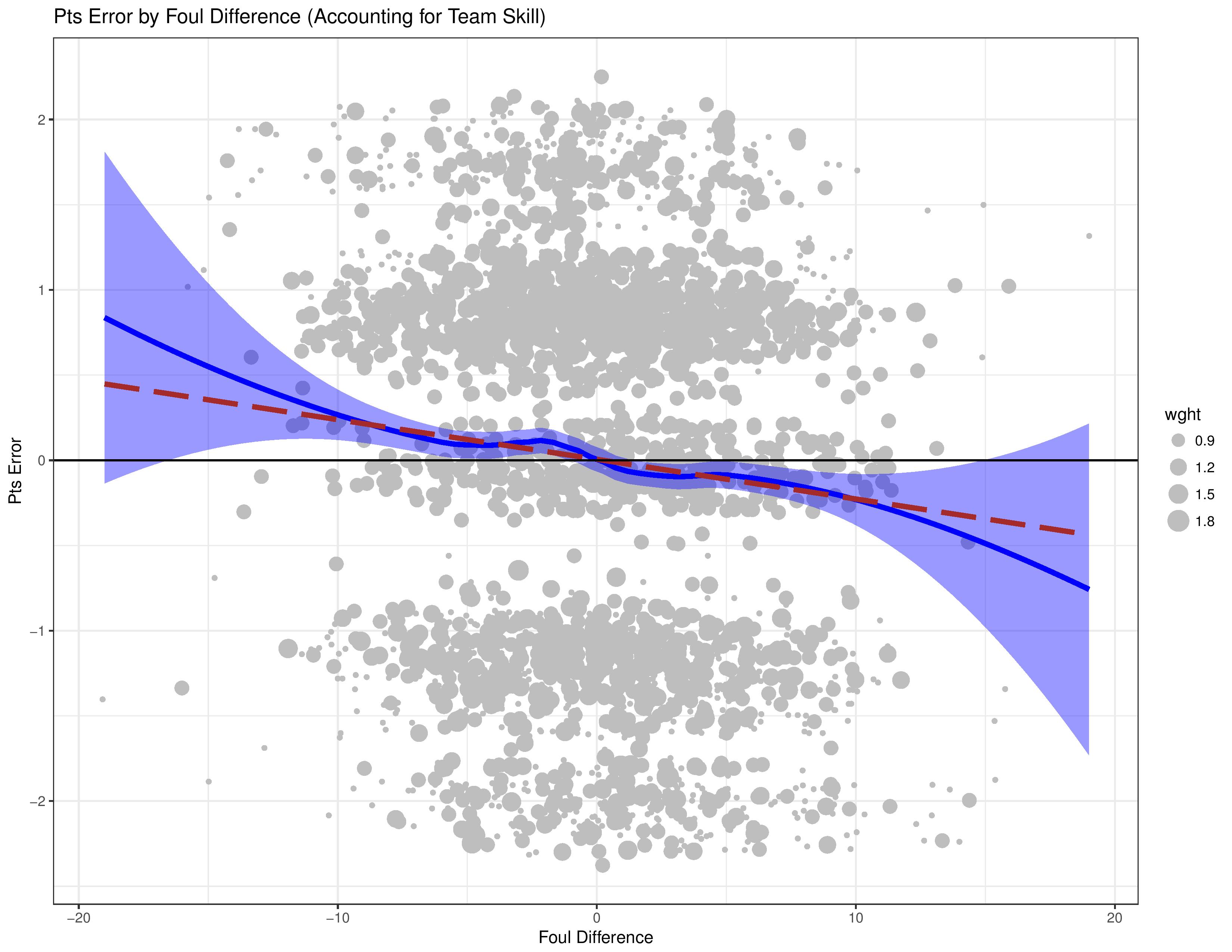
As was consistent with the univariate (one variable) analysis we performed before, the model overestimates teams who foul too little compared with their opponent and vice versa.
The following three charts show the same against each of the other referee decisions we’re analyzing.
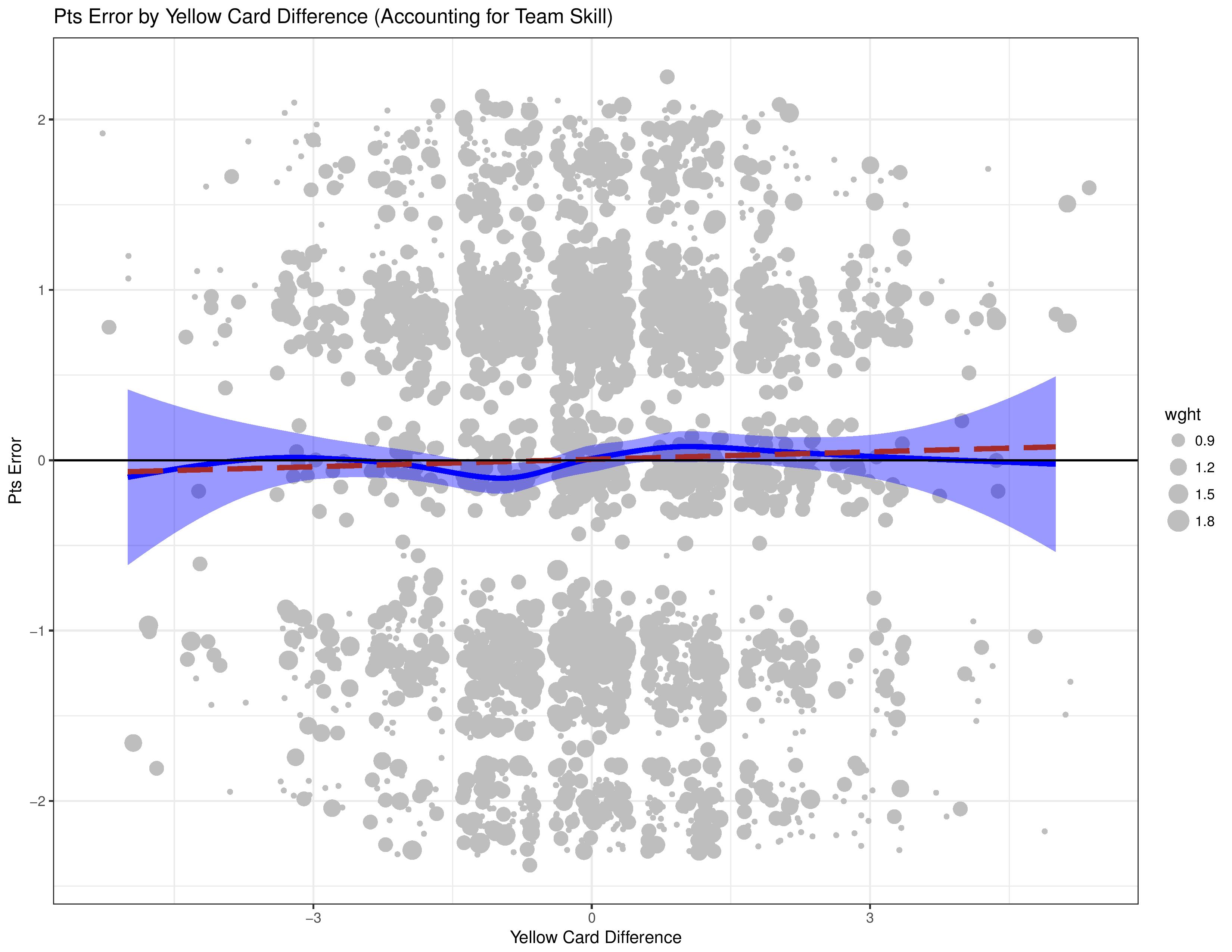
This shows that, actually, once we account for the team itself, yellow cards seem to make only a little difference with regards to results.
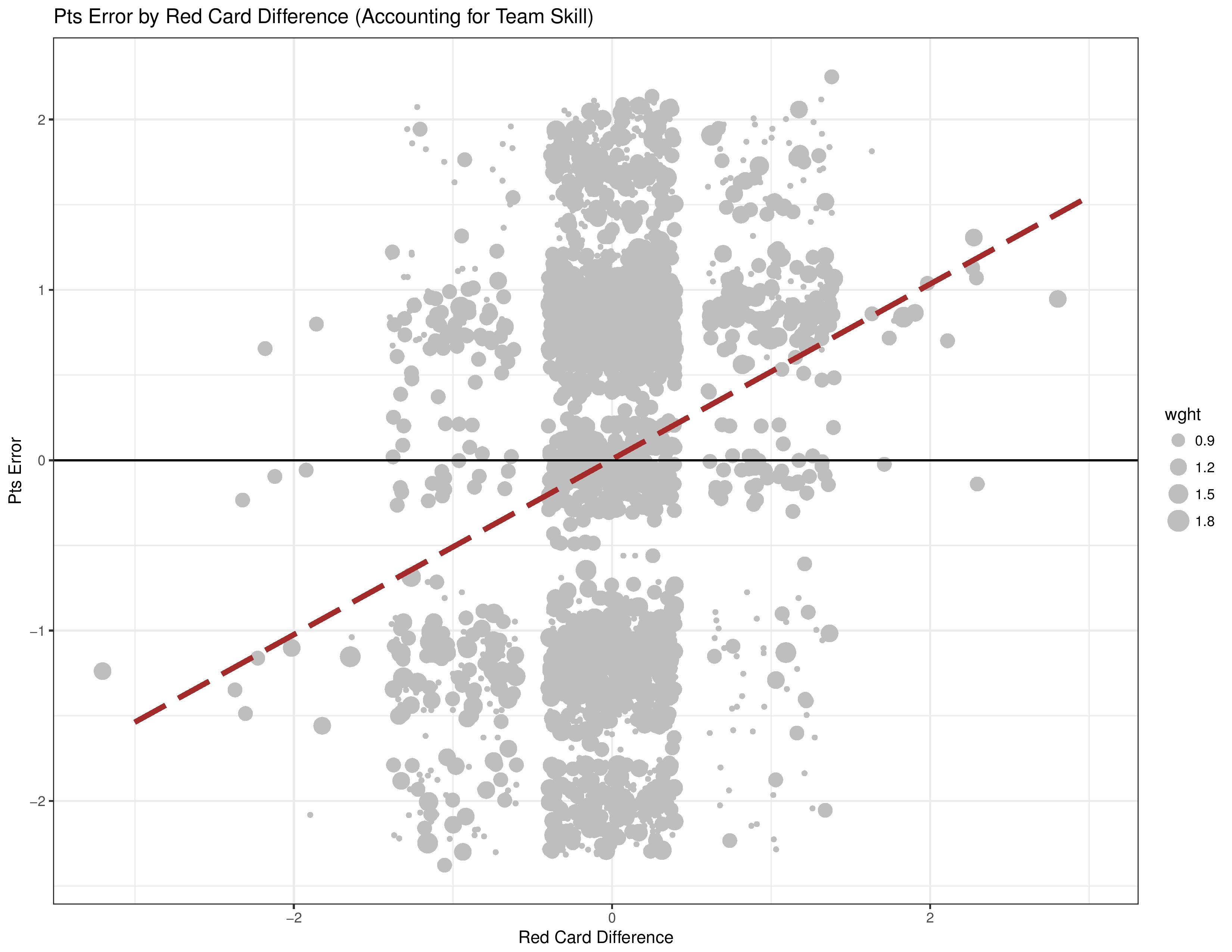
As would be expected, getting extra red cards leads to over-estimation from the model.
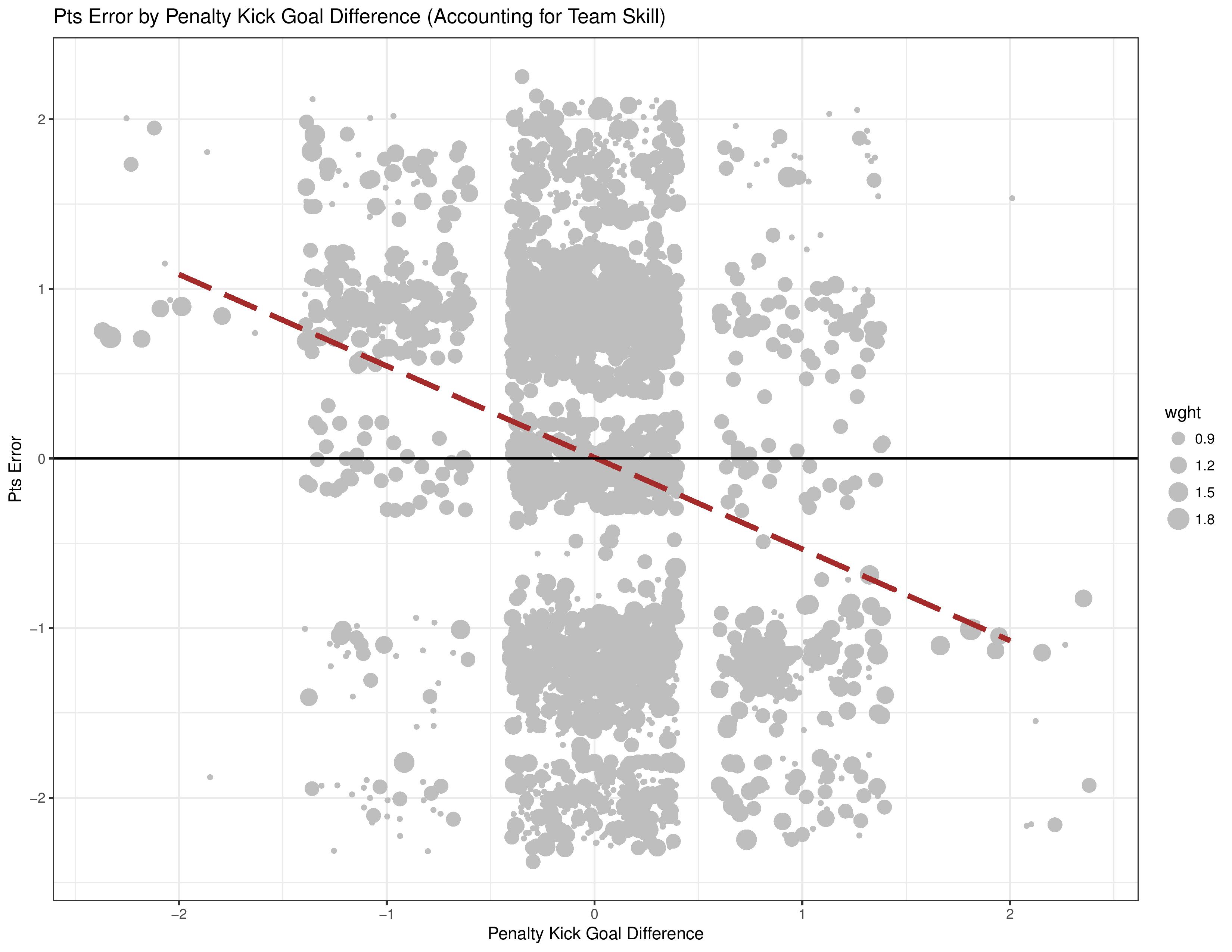
As would also be expected, receiving additional penalty kick goals results in underestimation by the model.
Team behavior adjusted referee bias
The trouble with drawing conclusions on all of the above analysis is that just because home teams receive better calls from referees on average doesn’t mean they didn’t deserve better calls.
Not to spoil too much, but there isn’t possibly enough evidence for referees to completely account for the large home field advantage we observe, and so disciplinary action should have different expectations from team to team based upon their actions and the home field advantage attributed by other factors.
For example, home teams tend to have higher possession numbers, but perhaps teams that have less possession are more likely to foul more which will also likely lead to more cards and PK’s.
Unfortunately, I don’t intend to go through five seasons of matches and label all referee decisions as justified/harsh to conduct my analysis.
Therefore, what I chose to do instead is use the match team statistics I have to predict the expected difference in fouls/cards/PK-goals, regardless of home field advantage (I built this model using only home team data, but then applied it to both home and away teams). The statistics I used were blocked shots, clearances, corners, crosses, duels won, offsides, passing accuracy, possession, saves, shots, shots on target, tackles won, and total passes. If these statistics can help indicate what level of fouling and discipline would be expected, the resulting comparison against these stats should show whether home teams are favored beyond what they deserve.
This falls under the realm of evidence rather than conclusions, because it relies upon those match statistics to explain call-worthy activity. While the team statistics undoubtedly are related to the team’s deserved discipline, it is unlikely to completely explain it. Nonetheless, this is still useful for attempting to measure a systematic referee bias against away teams.
The following shows, after the model described above has been applied, how referee decisions differed from expectations based on their match conduct.
*Note: “Resid” is short for “Residual” which is the difference between the prediction and the observation. In this case, a value less than zero indicates they received fewer of that decision than they should have. “Gap” refers to the difference between the team’s fouls/cards/pk-goals and their opponent’s.
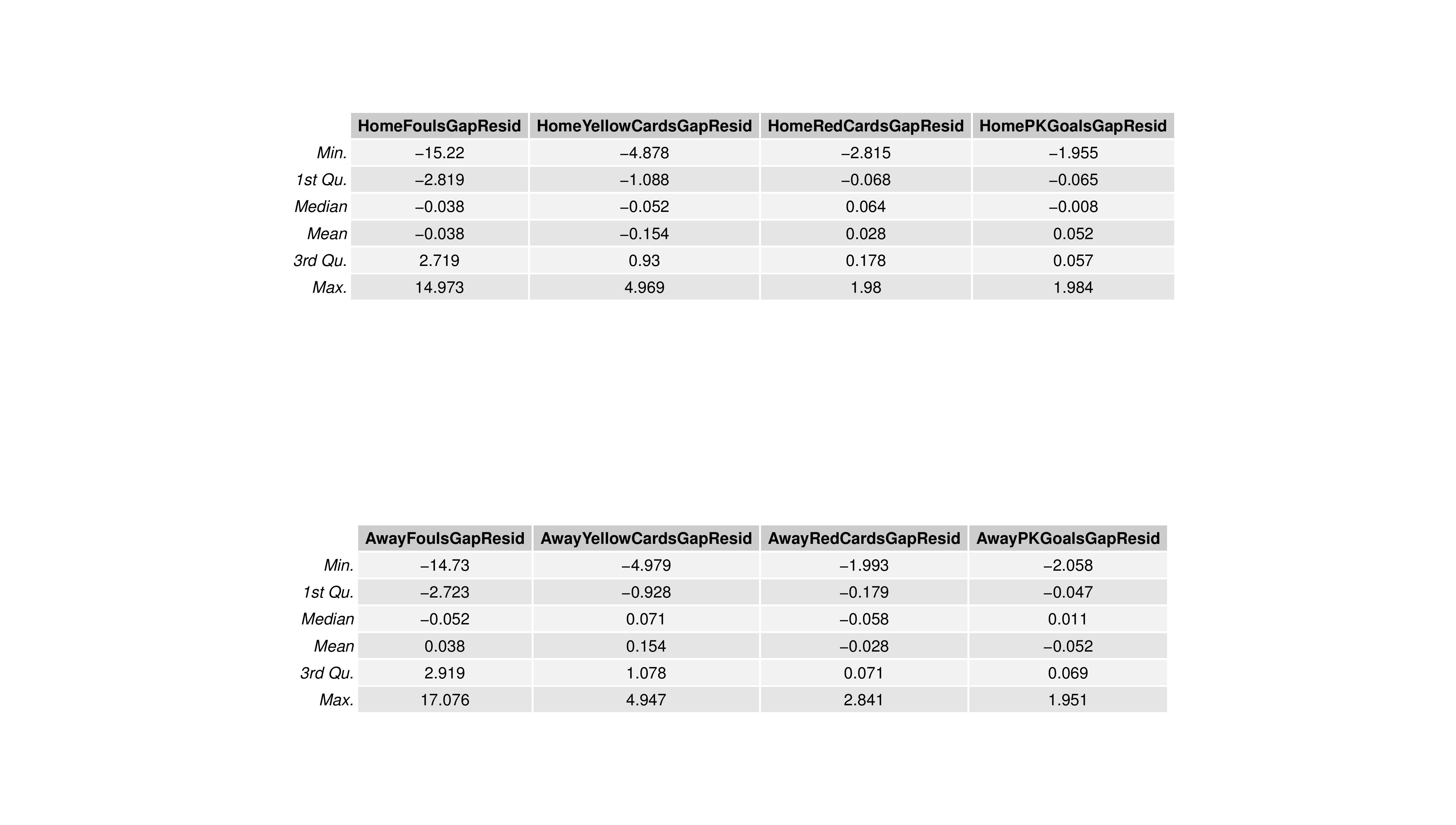
According to these tables, home teams receive an average of 0.038 fewer fouls per game than they deserve compared with their away opponent, 0.154 fewer yellow cards per game than they deserve more than their opponent, 0.028 additional red cards per game than they deserve more than their opponent, and 0.052 penalty kick goals per game more than they deserve more than their away opponent.
The following shows the distribution of the fouls gap residual (expected vs. observed)
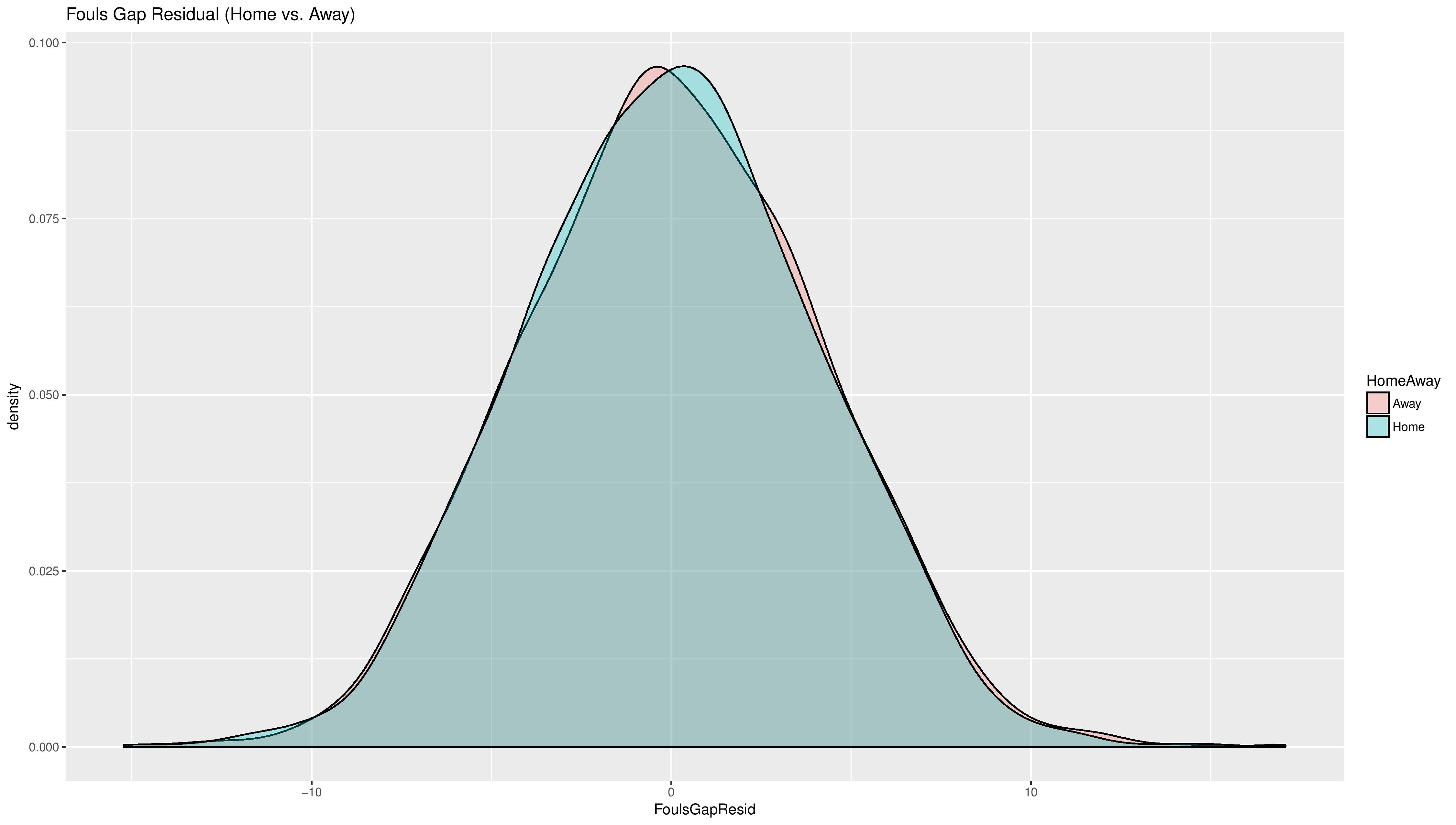
As you can see, the fouls gap residual distribution looks pretty similar between home and away.
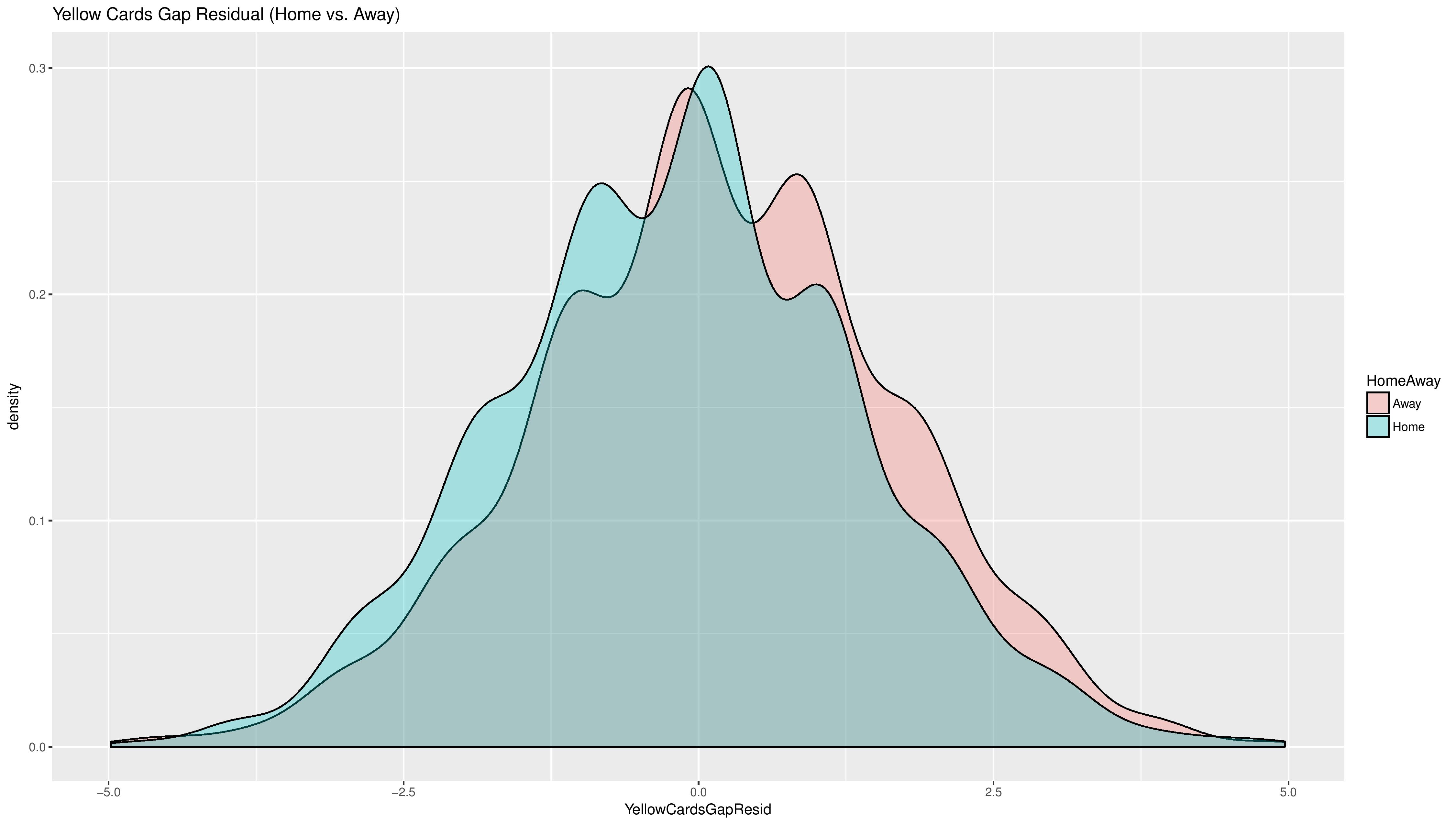
We can see here that away teams do tend to receive more yellow cards than they deserve compared with their home counterparts.
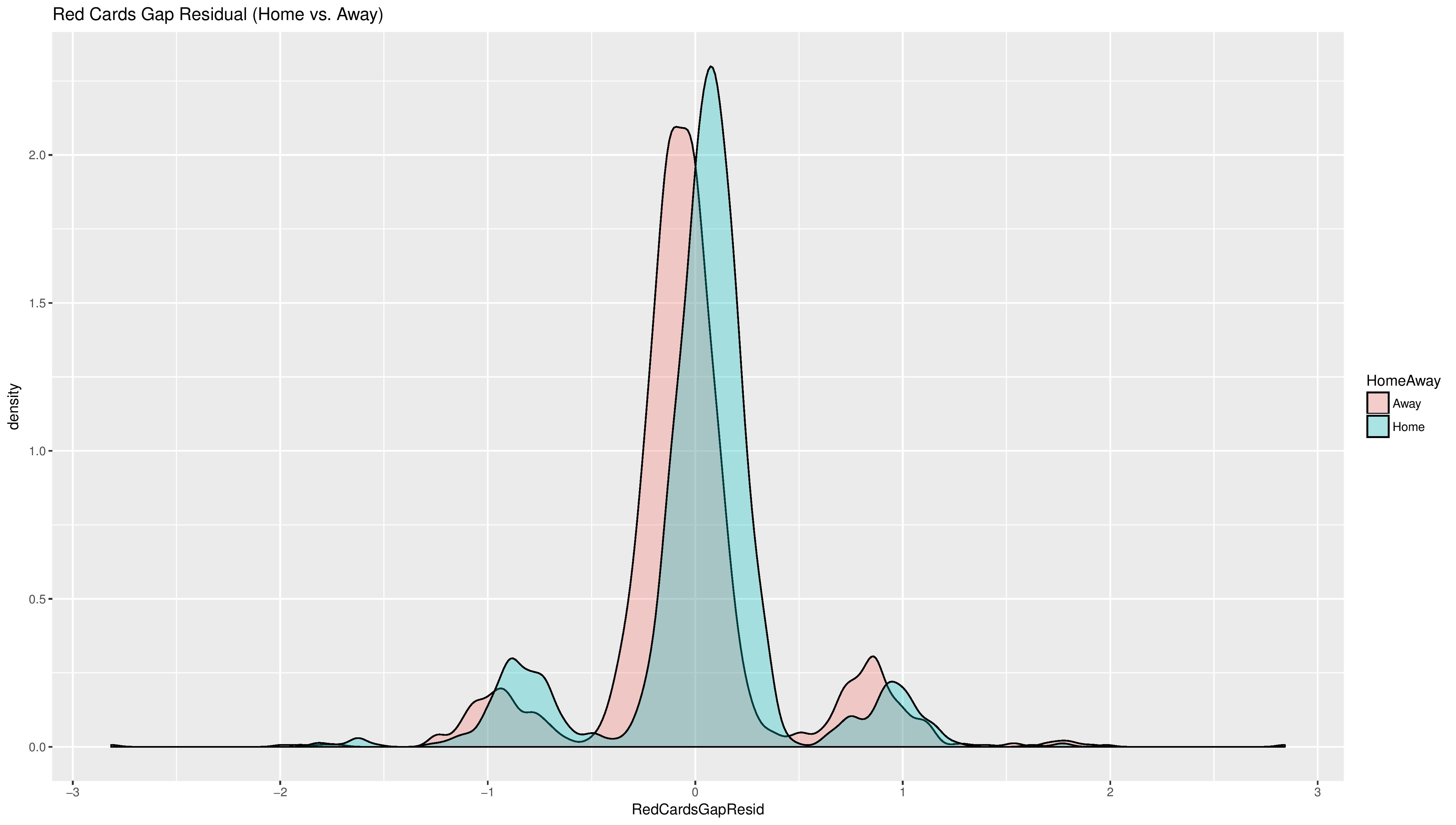
This shows that home teams actually tend to receive more red cards than they might deserve compared with their opponents.
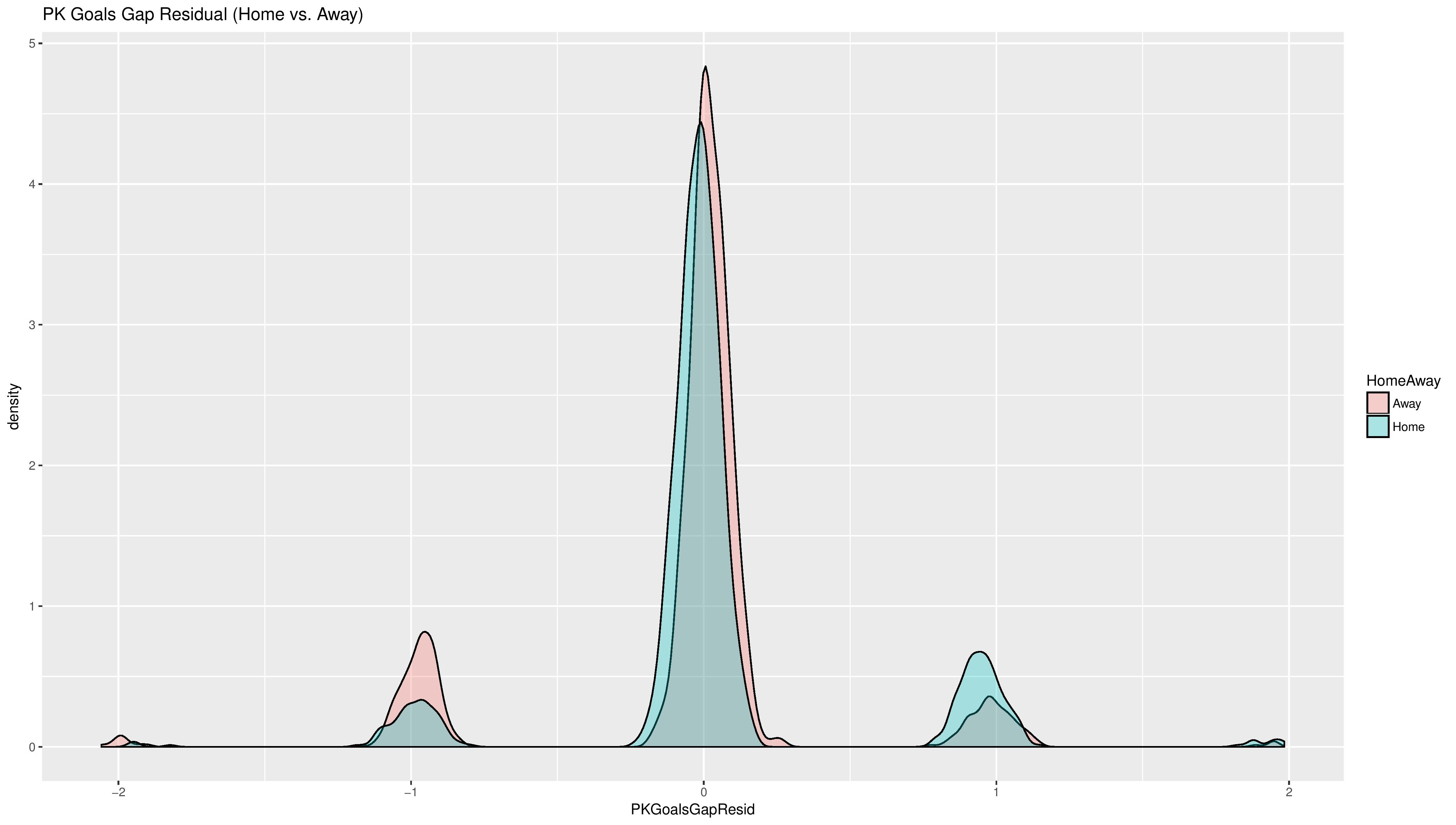
This shows that home teams tend to receive more penalty kick goals than their statistics would necessarily indicate is expected.
Conclusion
As I mention earlier, my ‘conclusion’ is not conclusive. I believe it is helpful, and not-to-be-disregarded, evidence, but better data judging the quality of all referee decisions is needed to conclusively determine anything. Nonetheless, the evidence presented is still real and helpful, despite not being as concrete as previous analyses allowed.
- Home teams are slightly favored when it comes to volume of fouls, yellow cards, and penalty kicks converted to goals, albeit by small amounts.
- Away teams are actually slightly favored when it comes to volume of red cards, albeit by small amounts.
- Teams that commit more fouls than their opponent actually correlate with better results (although this relationship could be due to other factors, and should not necessarily be adopted as a strategy to foul more).
- When I combine the calculated referee bias for each of those four stats with the tendency of each stat’s impact on match results, I actually calculate a -1.49% home field advantage due to referee bias, which actually indicates an away team bias, but more probable is that there is simply no real home/away field advantage bias across MLS referees
In my next article, once I get a chance to write it, I will break down bias at the individual referee level to see if there are some refs that are better or more harmful than others with regards to home bias.
Appendix
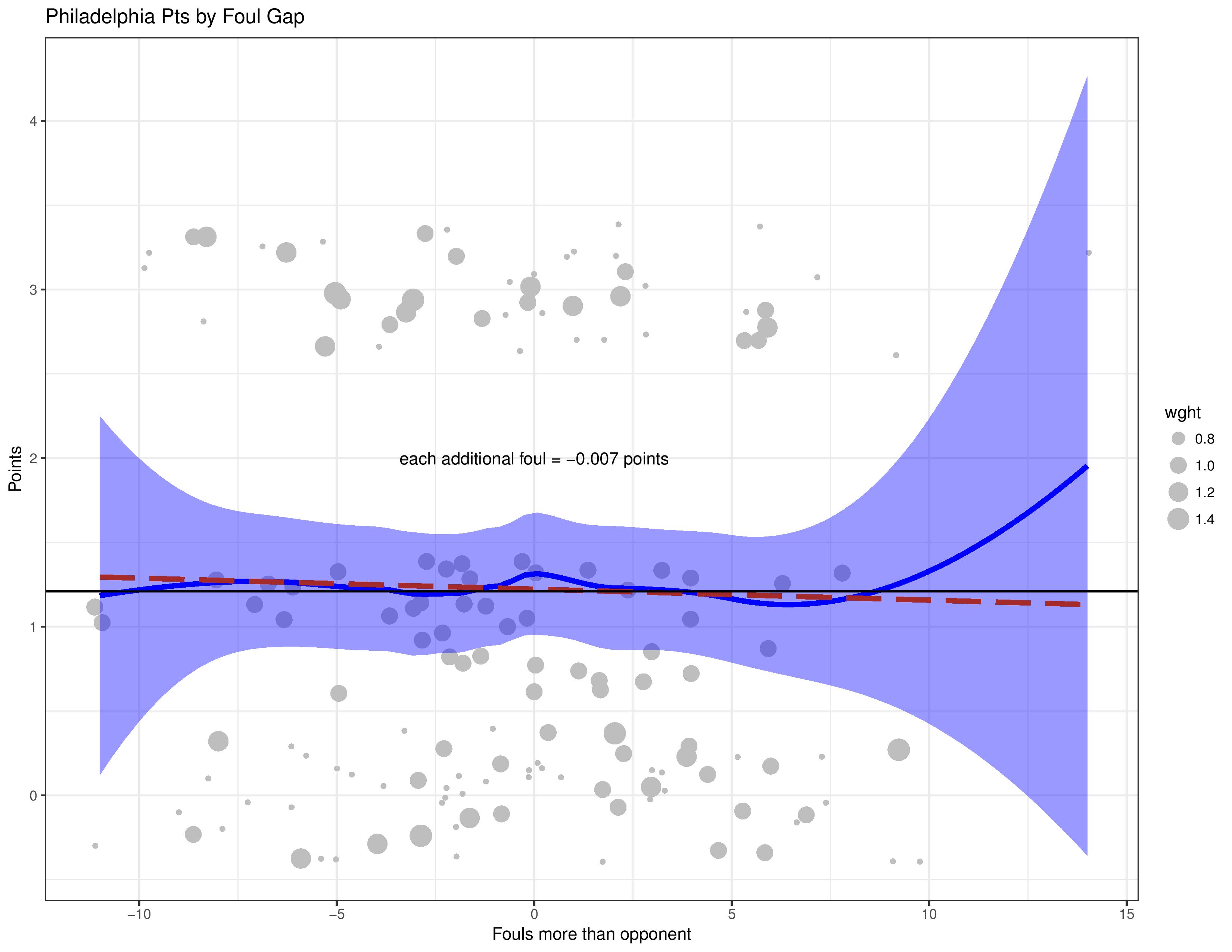
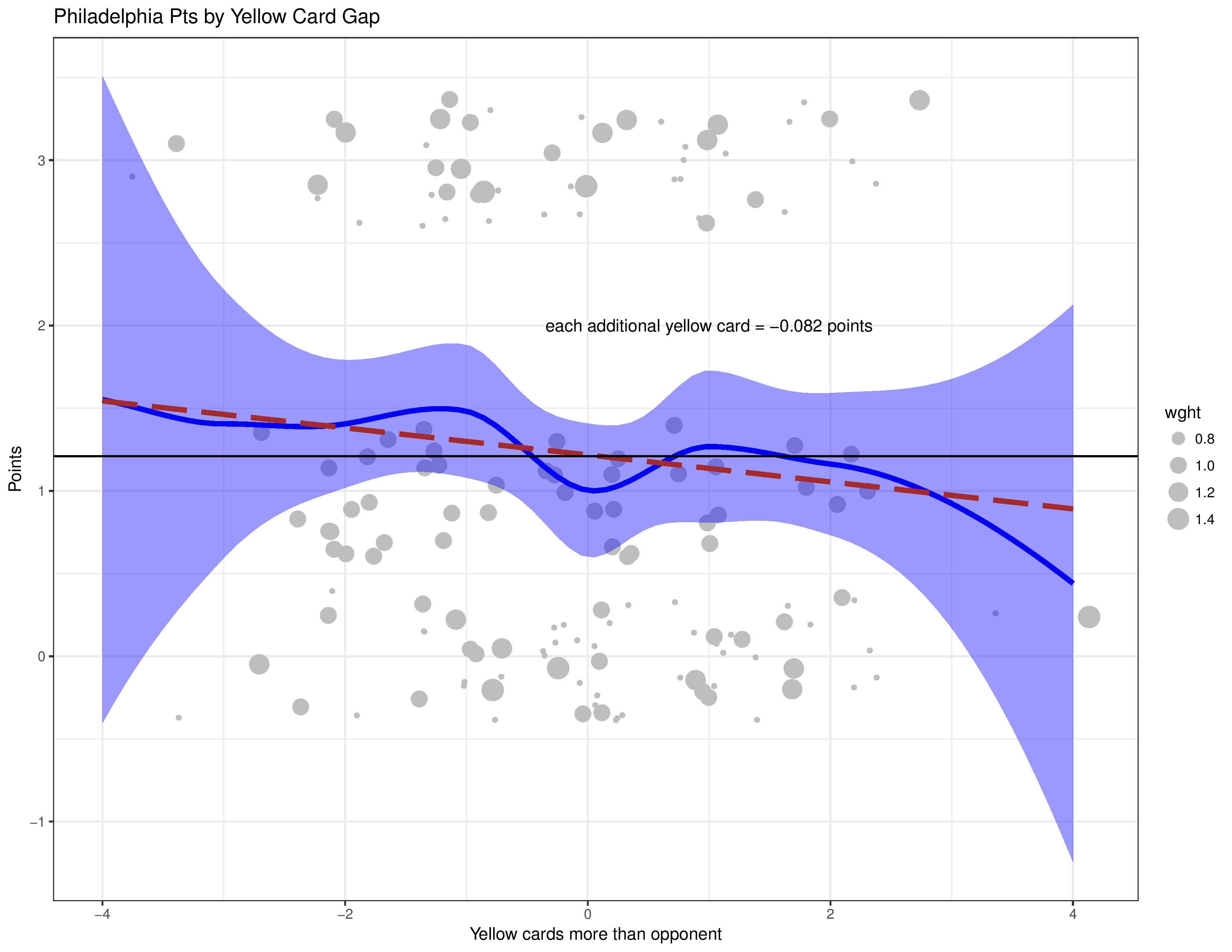
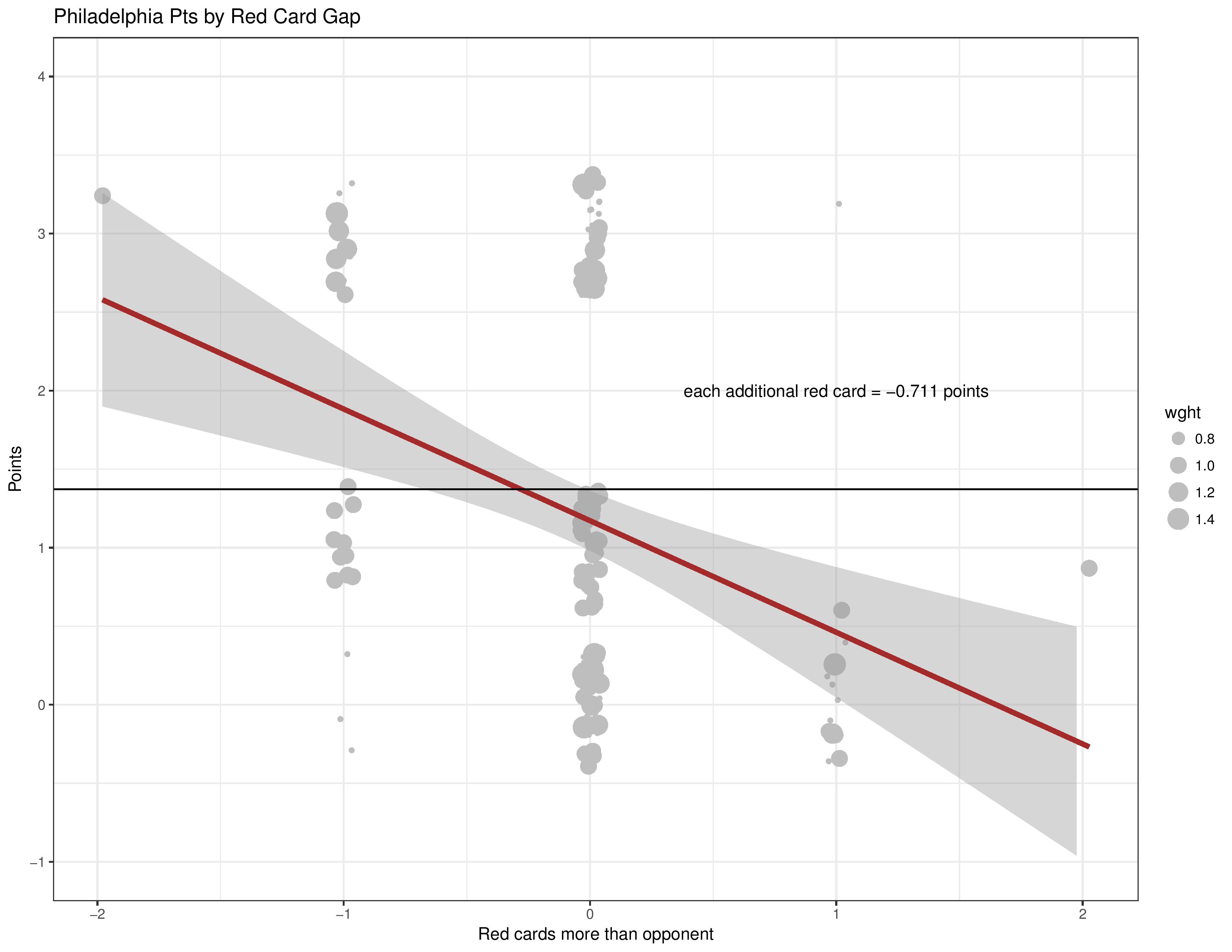
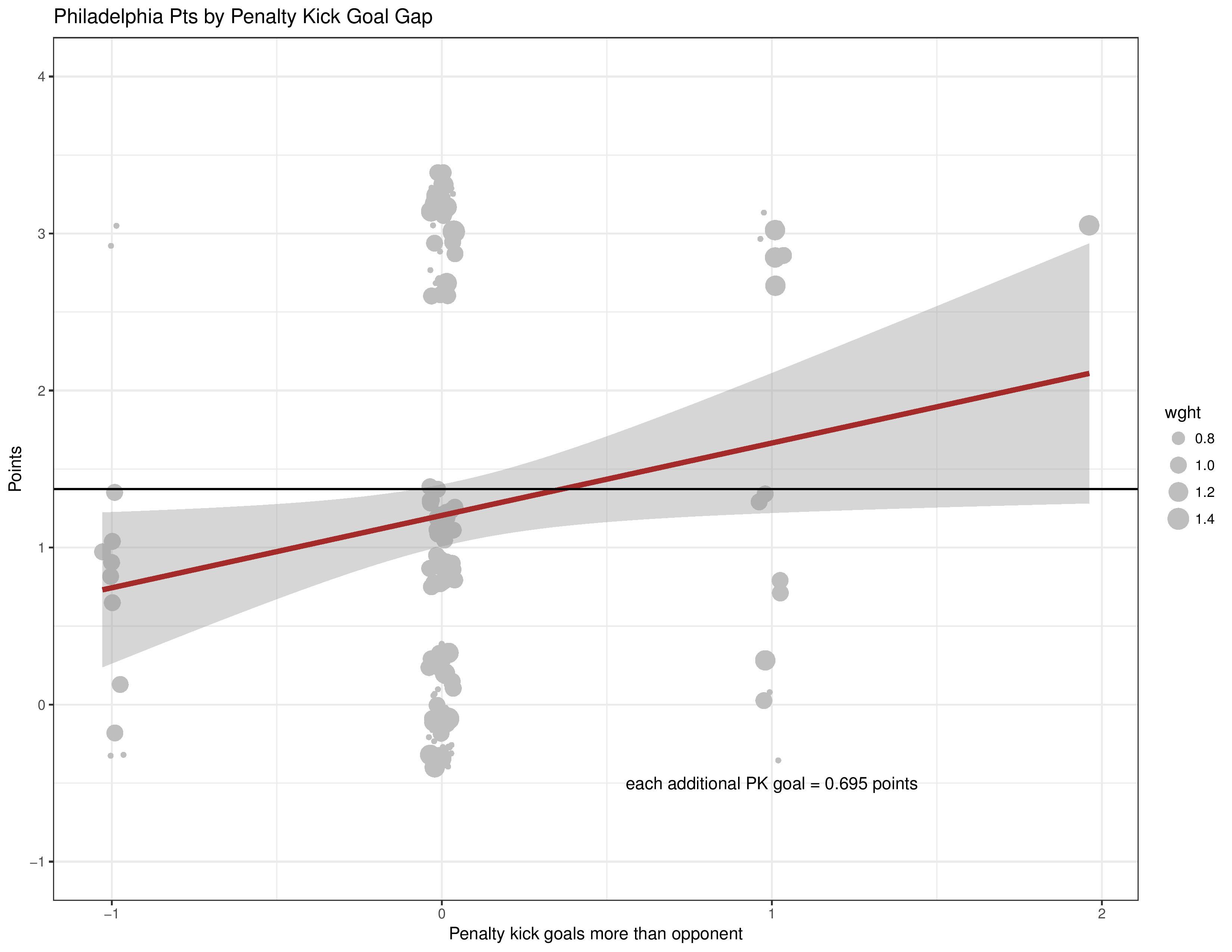
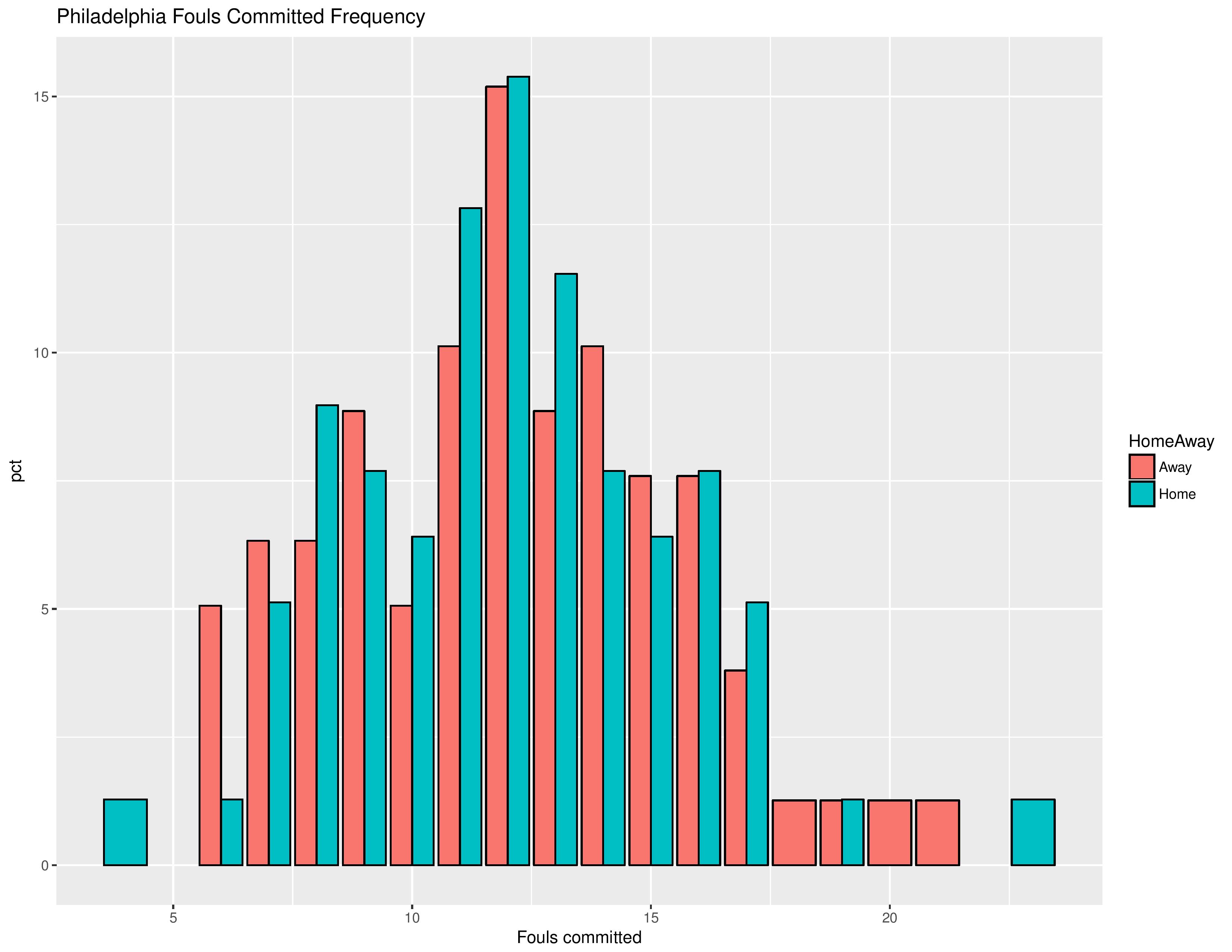
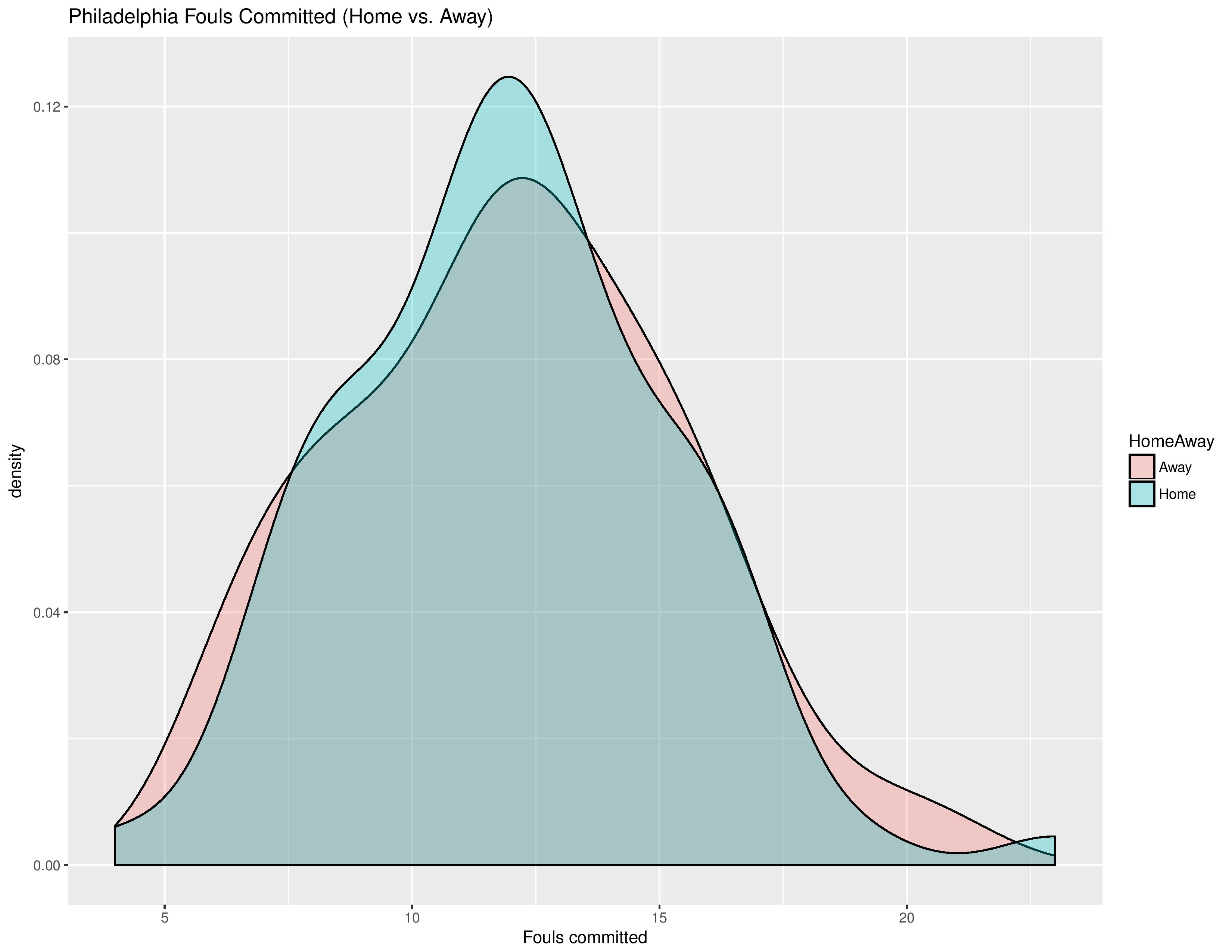
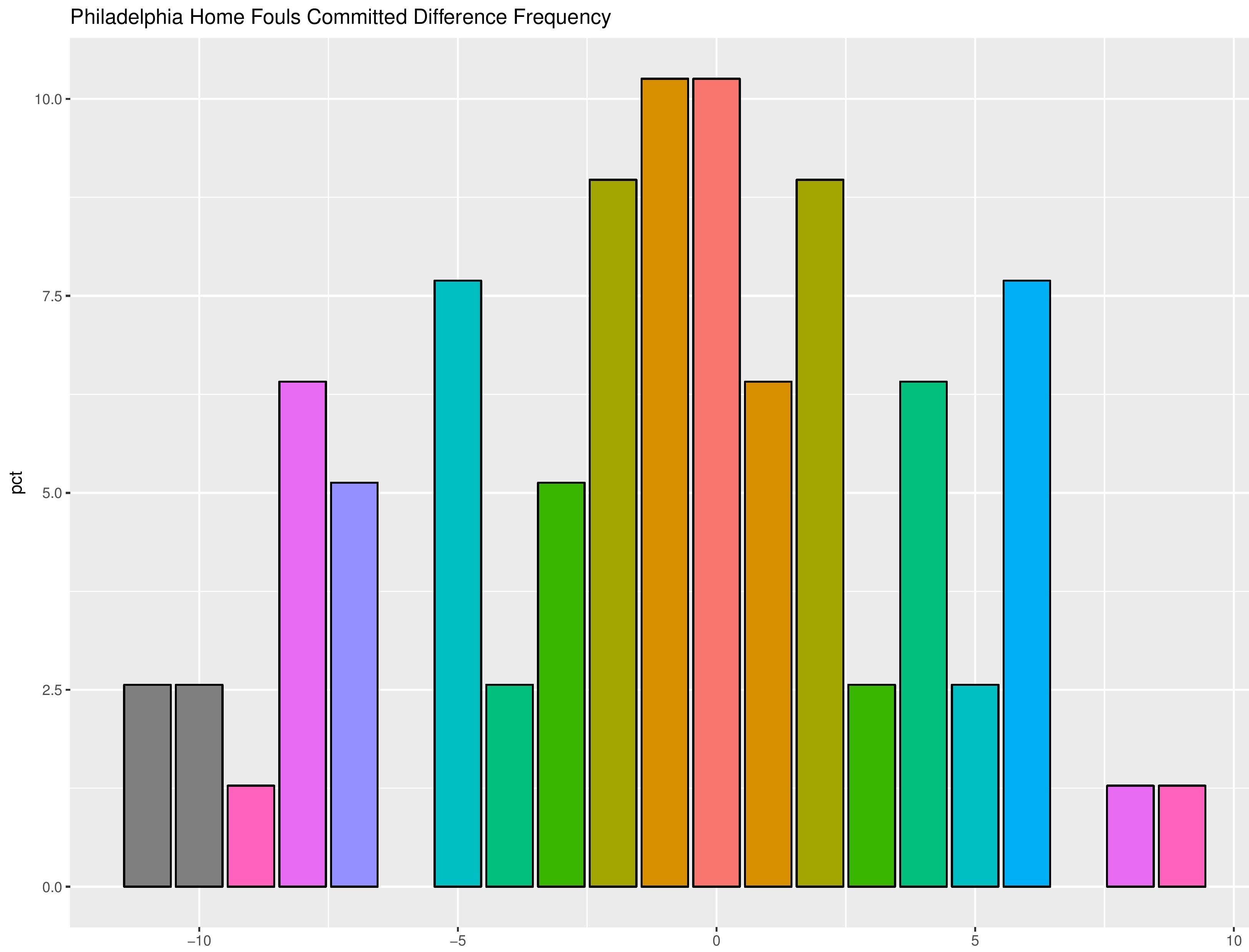
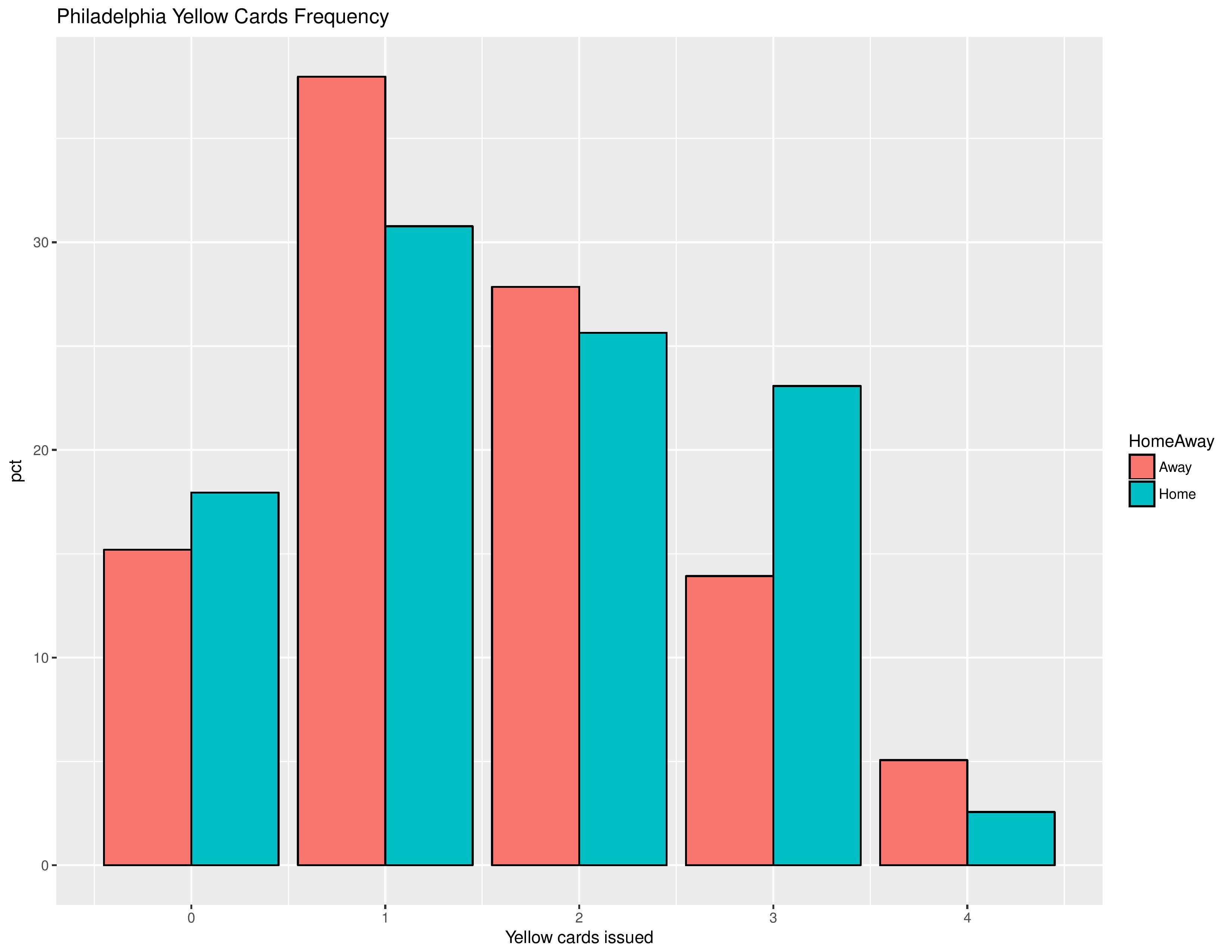
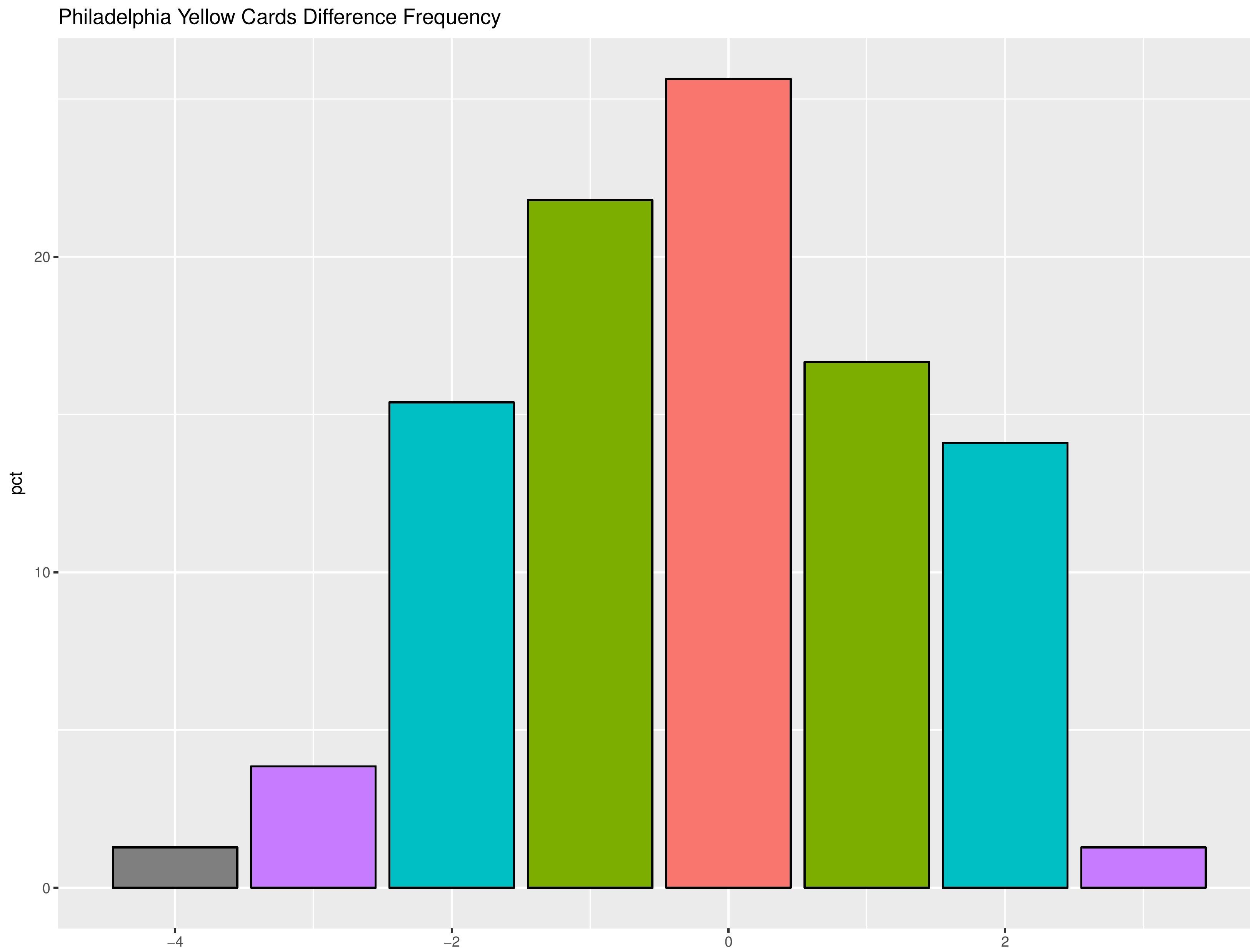

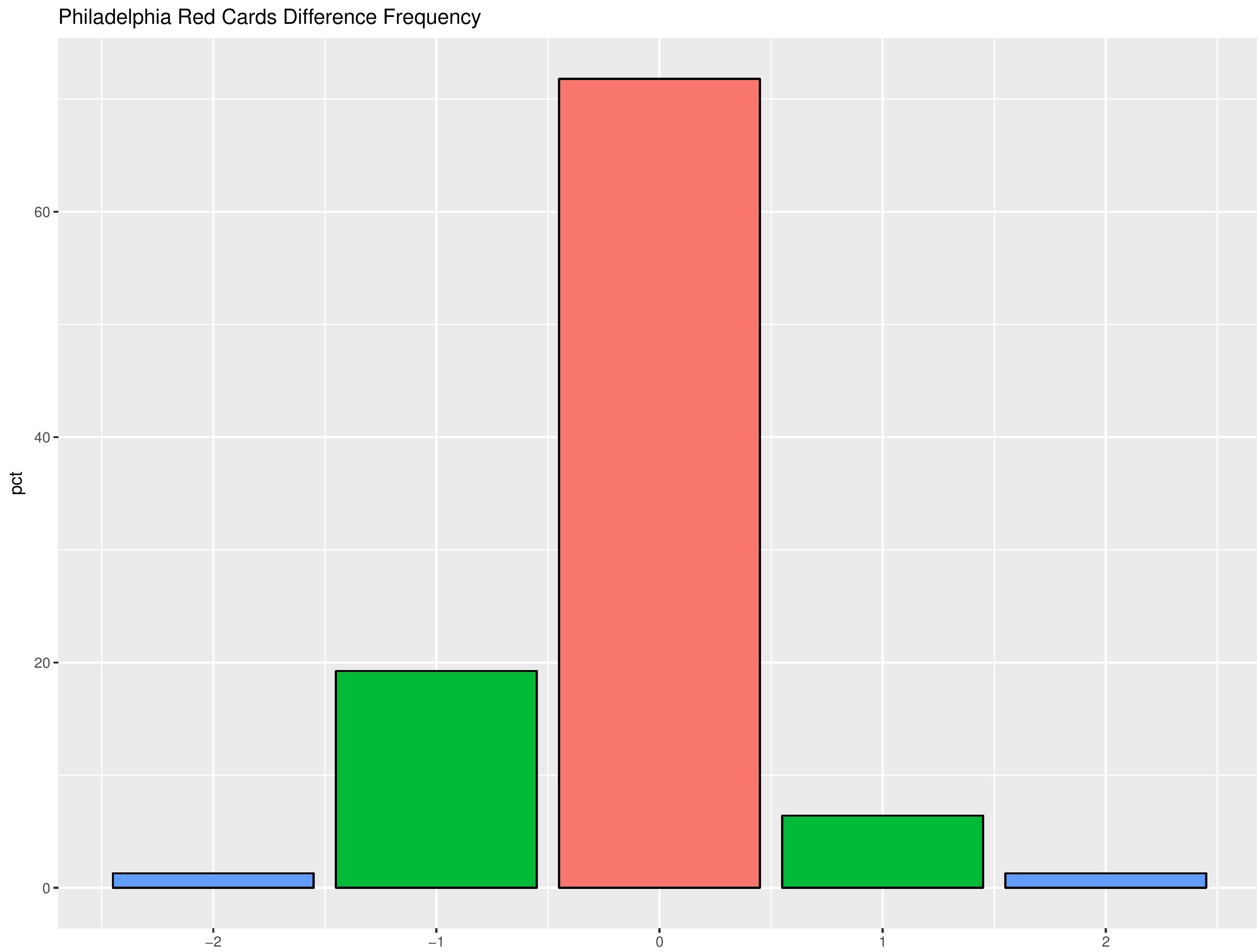
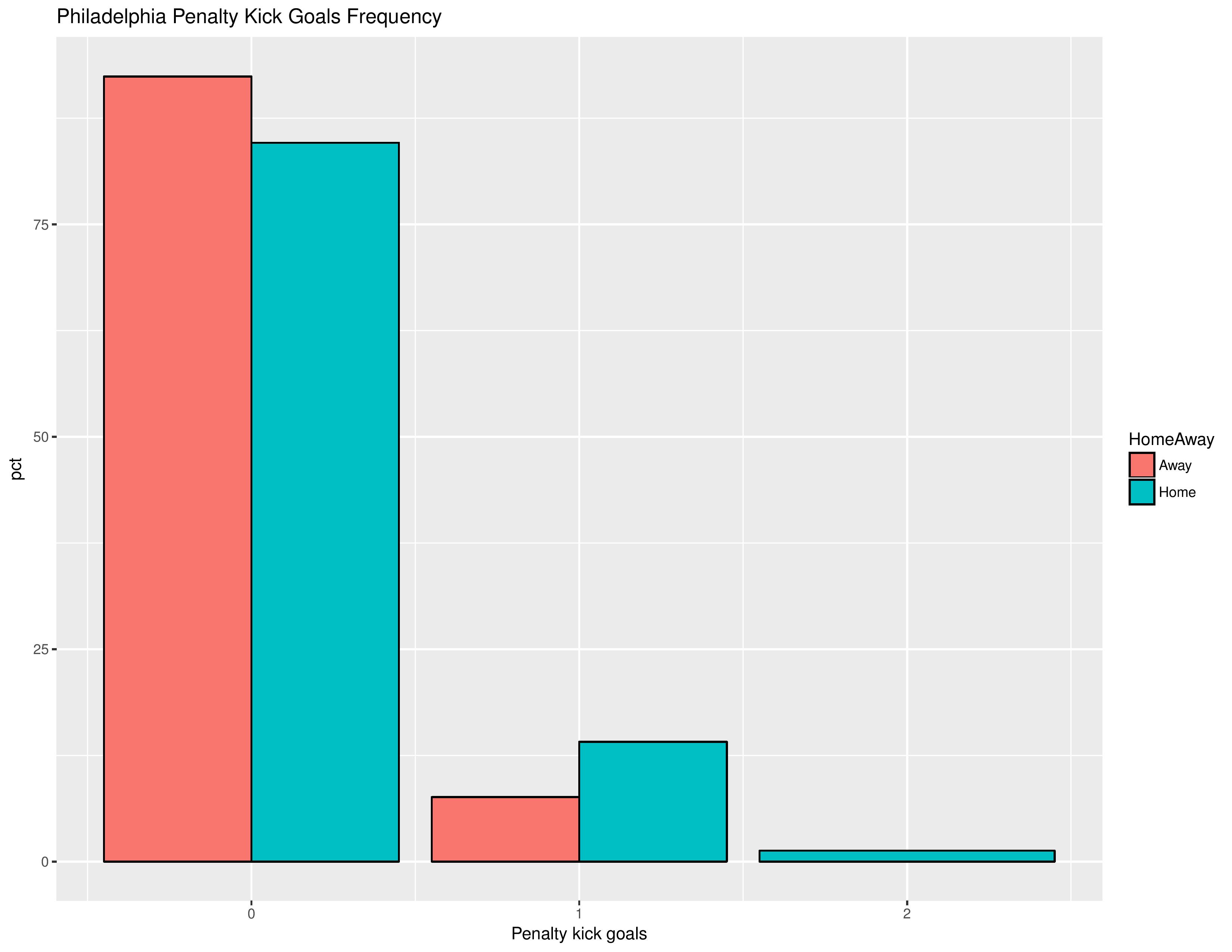
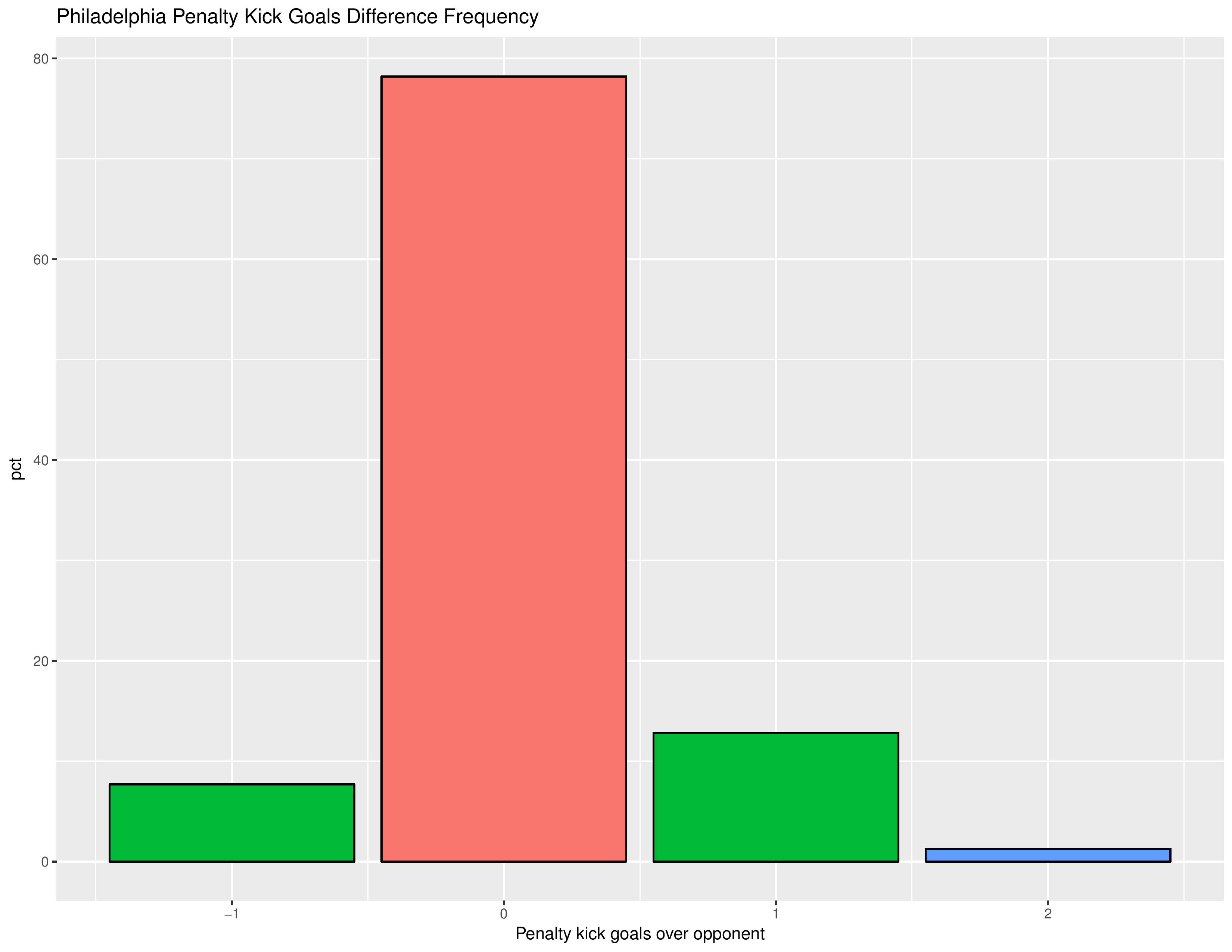
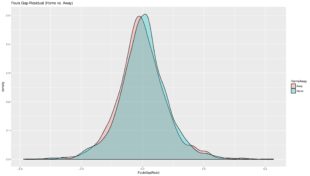

One thing about the influence of red cards is that I’d be willing to bet there is a significant disparity as to their effect depending on when in the match they are issued.
That’s definitely true, and I try to account for it in my game probability model/chart that I’ve put into my regular SEBA posts. However, I don’t think the timing is likely to demonstrate much referee bias.
If I have understood correctly, you have accounted for the potential imbalance in disciplinary action between a team perceived to be one of higher quality and one of lower.
.
Is there any way to test for teams and head coaches who are stronger advocates of greater physicality of play? If referees perceive teams this way, they may be predisposed to call against them.
There is also something to be said for the possibility that away teams tend to play more physically. It’s a fairly common tactic for away teams to play conservatively, bunker down and look to play the counter, which is a style of play that might lend itself to more fouls and more severe fouls – particularly as the away team (playing conservatively) look to disrupt the home team’s possession and create counter opportunities. Or, alternatively, when the home team does get through the bunker, creating panic effects in and around the box.
*
(Interestingly, this opens up the possibility of a feedback effect, where the perception that playing away is harder to get a result, which results in the adjustment of a team’s play style in a way that leads to more fouls, which in turn might actually make it harder to get a result. This is all just speculation, though.)
*
While it looks like there is a statistically significant effect – though not a big one – in terms of referee decisions, there could be a few causes. Classic correlation vs. causation problem. Great work, though. Pretty cool to look at the numbers.
I agree Tom. The hope was that the bunker-mentality would show up in their team statistics, and therefore we could account for their difference in expected fouls/cards/etc.
Yeah, that would be interesting to test, but I’m not sure where I could get that data from, unfortunately.